Bolivia, Part 3: Yungas and Mud Riding
— Bolivia, South America — 8 min read
August 3 - 9, 2010
I left La Paz and headed north to more remote regions of Bolivia towards the Brazilian border about a 1,000 km (625 mi) away and most of it was off-road. The road plunges from the heights of the Andes, down to the Yungas and finally onto the savanna leading to the Amazon jungle. I was in expedition mode, as I knew the terrain and conditions would be tougher.
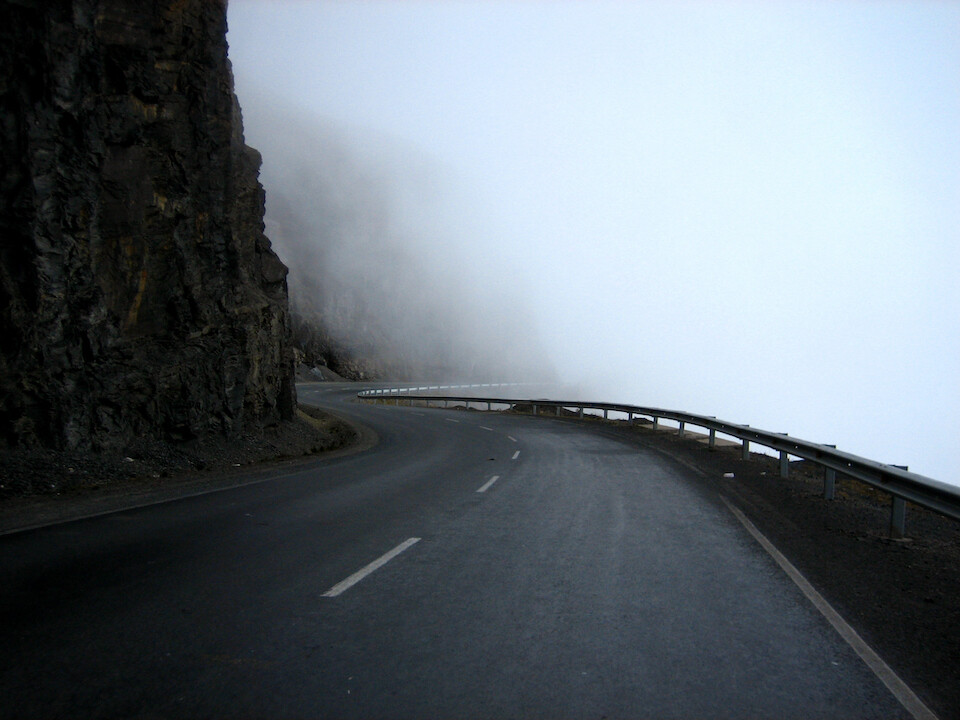
At the peak of the Andes at around 4,670 m (15,300 ft), all going downhill from here. I rode this road to Coroico just last week and it was bright and sunny, but today, fast moving clouds shrouded the route in neblina (fog), greatly reducing visibility. It was also lightly drizzling, making for a slick road surface.
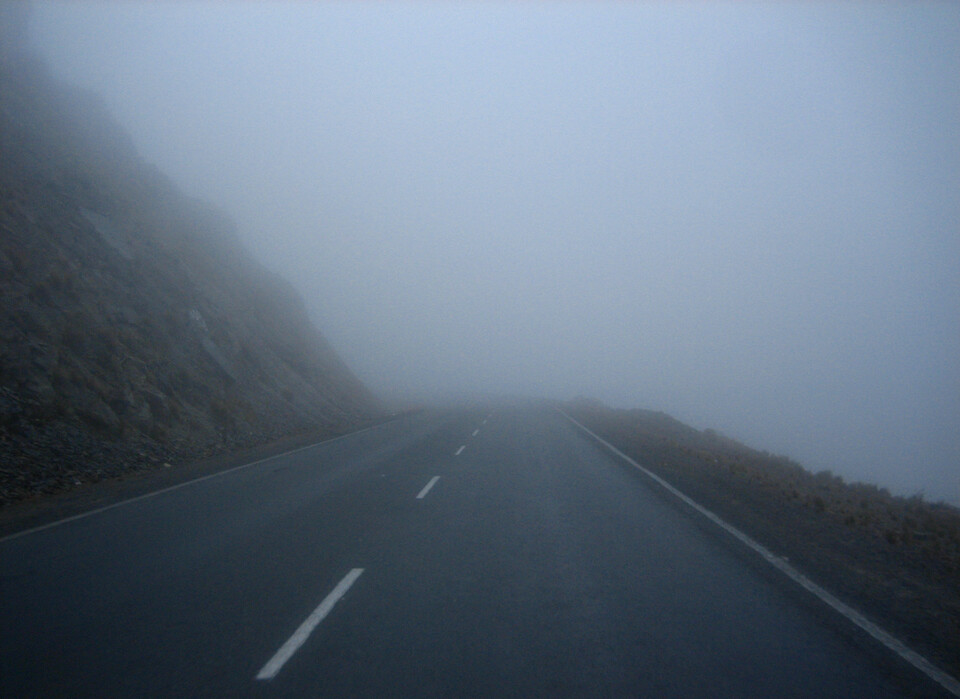
Riding into a white-out, where visibility was reduced to a few meters. I slowed down a lot but had to keep moving. Imagine these conditions on the old Death Road and one can see how it gained its notoriety. But this replacement was going to show me that the danger is still there in inclemental conditions.
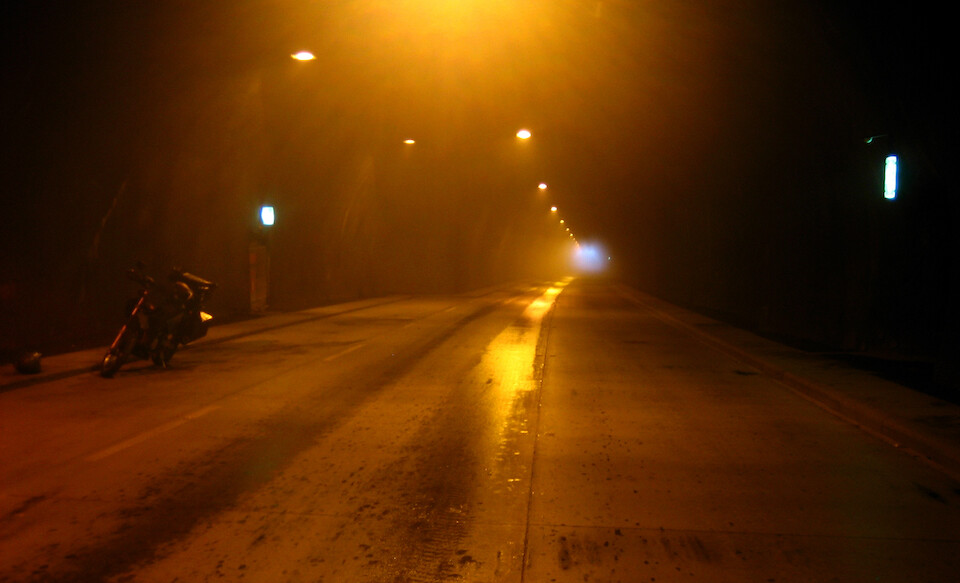
Taking refuge in a tunnel and putting on my rain gear. Unaware of the accident about to happen.
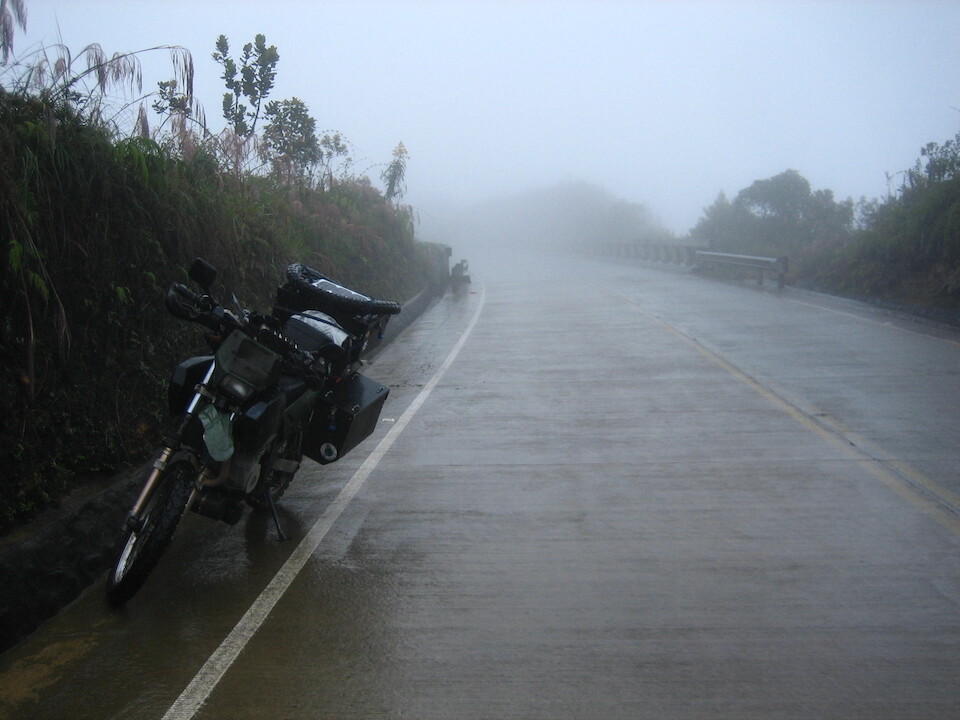
Fog didn't ease up and visibility was still just in front of my face. As I was negotiating some tight hairpin turns with my safety glasses and helmet shield fully wet, I saw a truck emerge out of the fog suddenly in front of me in my lane. He was one of the typical vehicles down here that doesn't have a working rear tail light or brake light. The truck came to a sudden stop, maybe to let me pass but it was too close to me and I knew if I slammed on the brakes, I was going down (reminiscent of my first accident in Costa Rica) so I had to go onto the shoulder to avoid hitting him, but the shoulder was covered in slick mud and I went down instantly. No injury to me, but sanDRina suffered a broken windshield as she hit the right rear tire of the truck. The truckers jumped out and helped me get the bike up and I didn't know if they were shouting at me or apologizing, but it was all over within a few minutes. I regained my composure and carried on with my eyelids taped open!
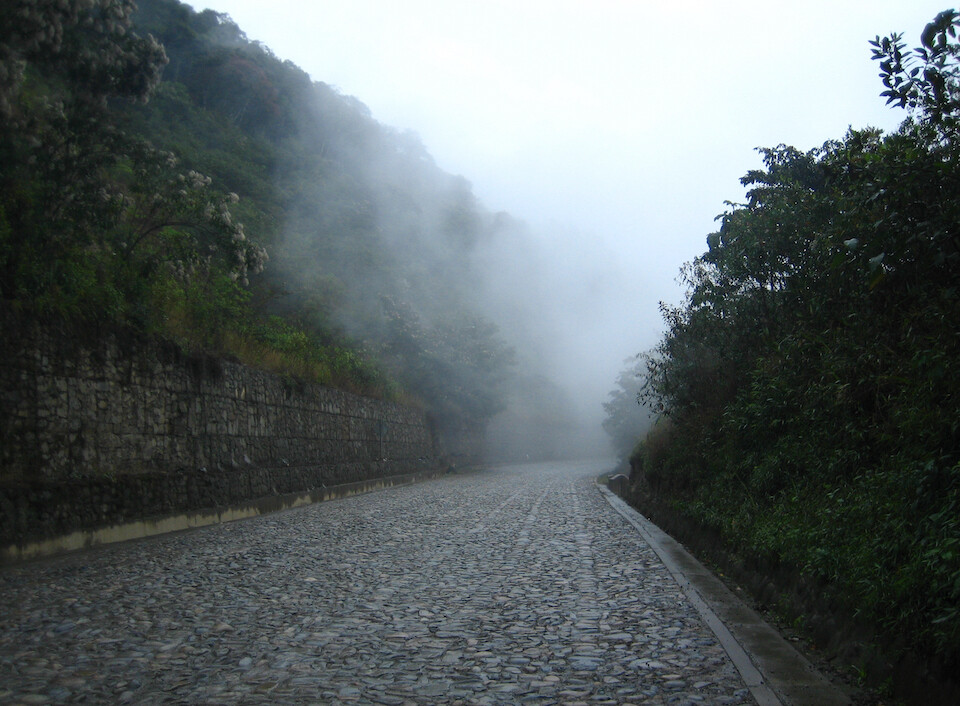
The pavement ended near Coroico and the road turned to cobble stones as I pushed north to Caranavi.
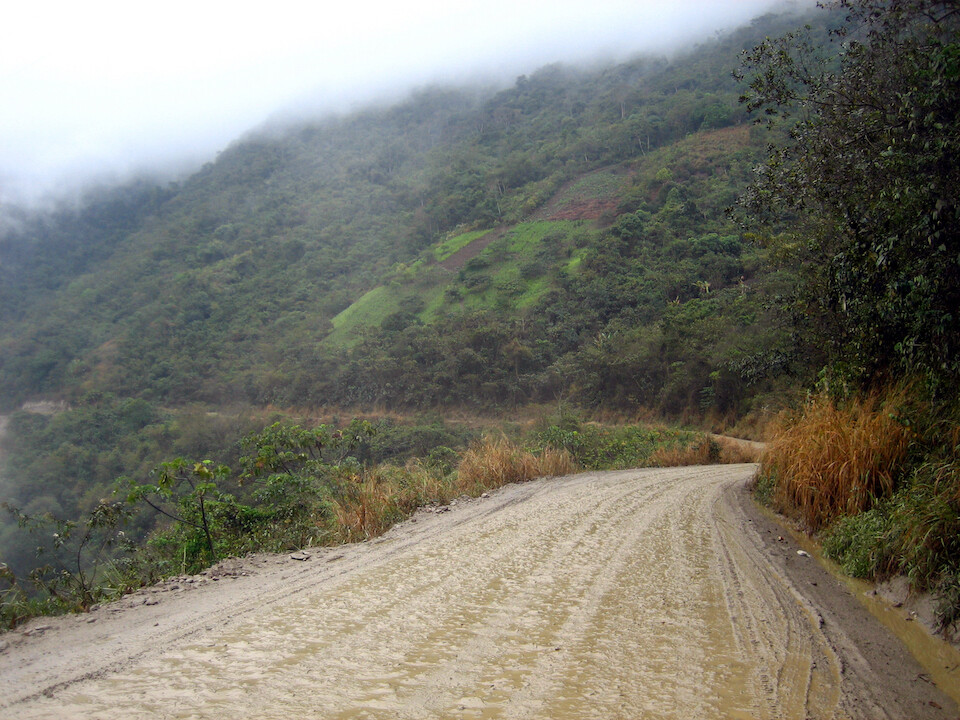
And a little further, it went one step further to mud. Wet mud was the one road condition that I was most dreading with this heavy bike but was happy to see that it wasn't so bad to ride through. Just take it easy and go smooth on the bike inputs.
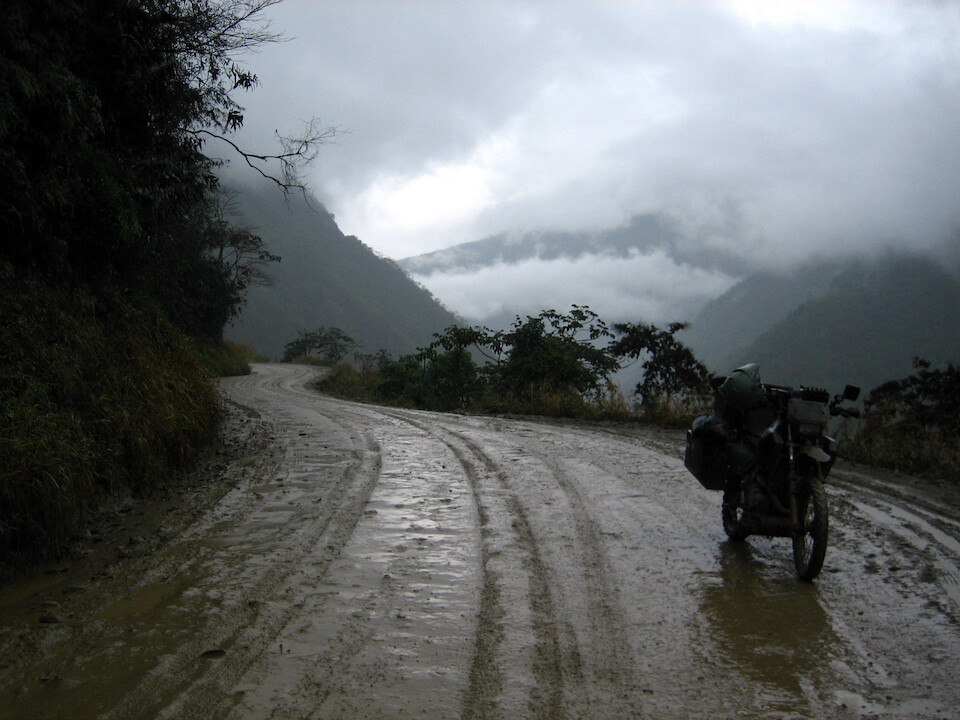
This road wasn't that bad as you can see the wet mud was only a few millimeters deep and underneath was a hard road surface. Pretty nice views of misty valleys with the sun trying to poke through the constant drizzle.
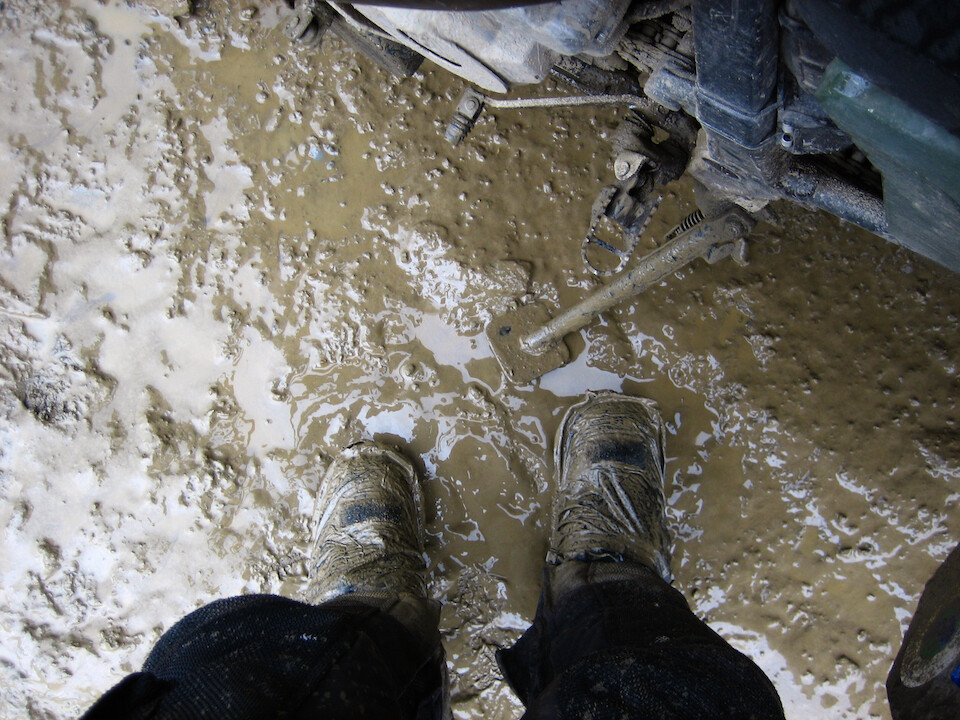
Blechk. First time riding in wet mud.
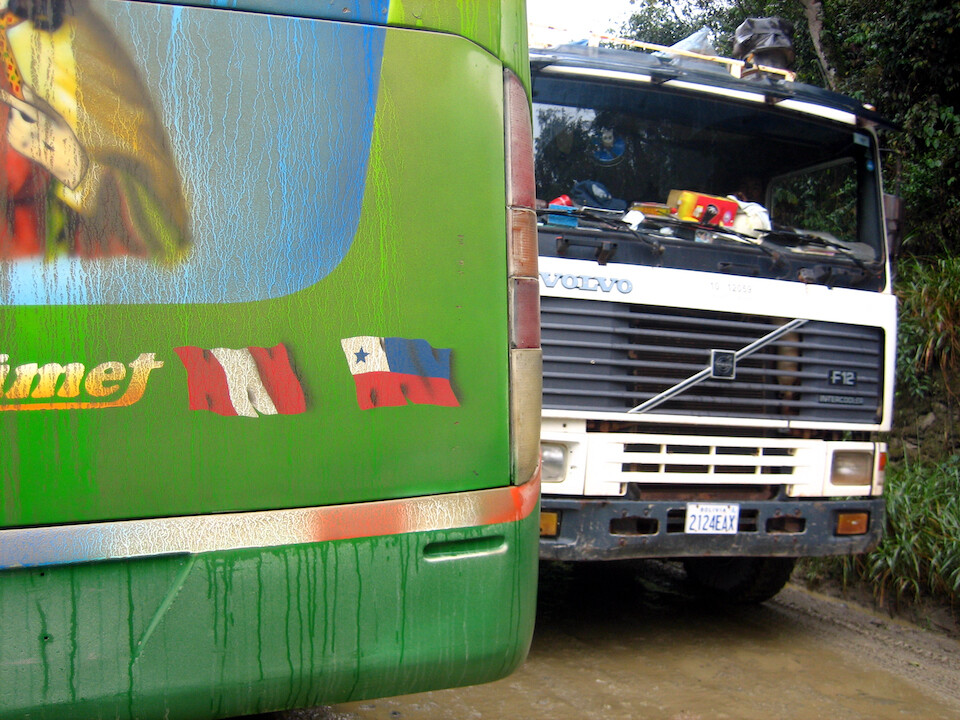
The road from Coroico to Caranavi is cut into the cliffs and is narrow in most places, making encounters with oncoming traffic tricky, especially as this is a commercial route with lots of trucks and buses. And I didn't catch on for a while that traffic on this road drives on the left (like in India) - repeated flashes from oncoming traffic on the right side of the road was confusing.
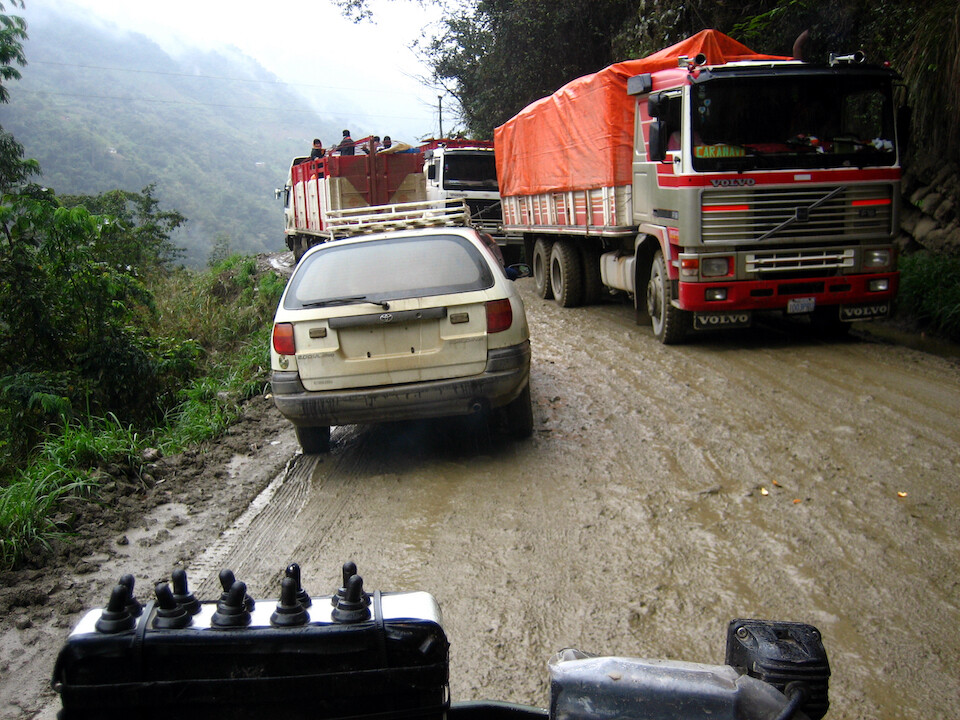
It's because in precarious situations like this, the outer-most driver needs to be able to see how close he can get his wheel to the edge of the cliff to let traffic past (driver is on the left side of the vehicles here) and margins are very small in places. In these muddy conditions, I wanted to stay closer to the inside edge, but no, I had to ride close to the cliff :/
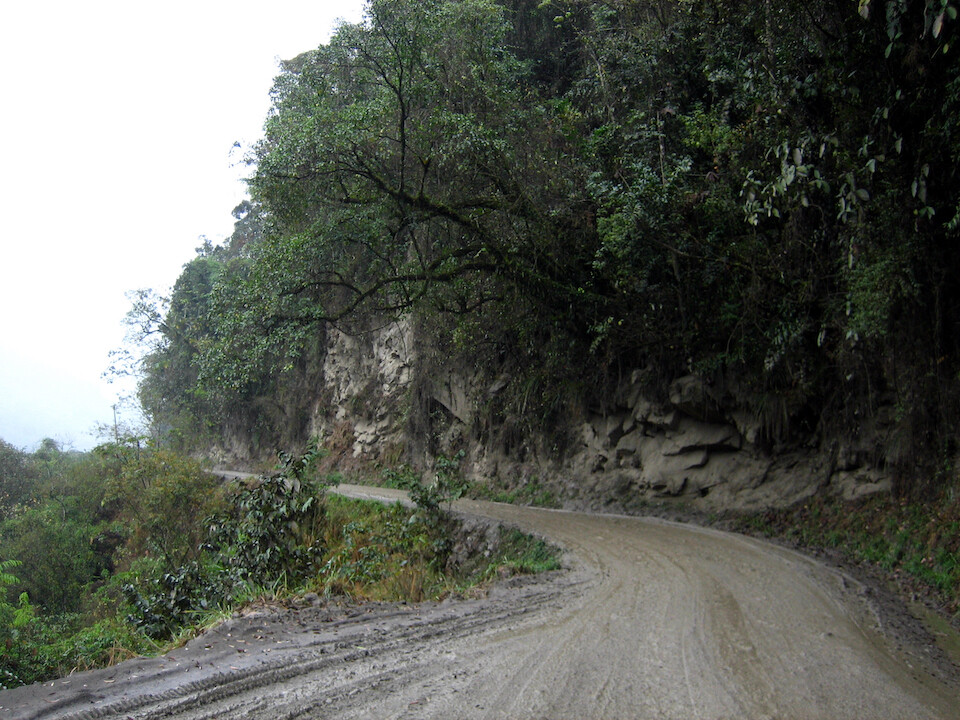
When there was no traffic, it was quite a pleasant ride and I was getting the feel of riding in mud.
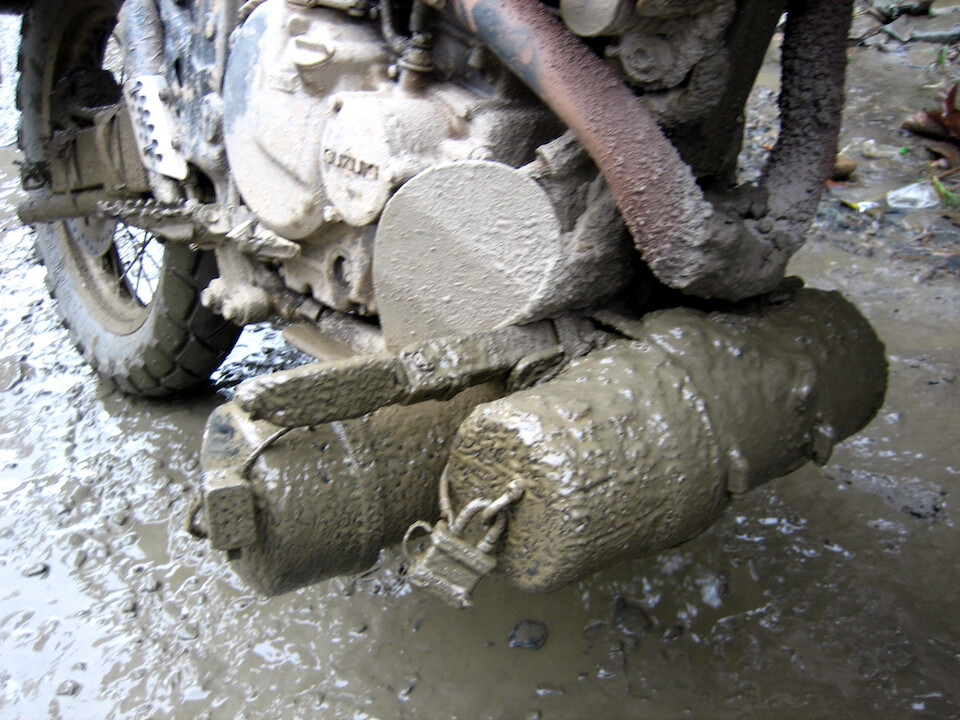
Mmm, everything coated in a thin layer of mud. I was hoping not to get a flat tire in these conditions, cause I didn't want to touch the bike. I used a hose near a river to wash off the bike, especially the oil radiator and cooling fins on the engine. Even with my shortened front fender, there wasn't much mud on my oil radiator.
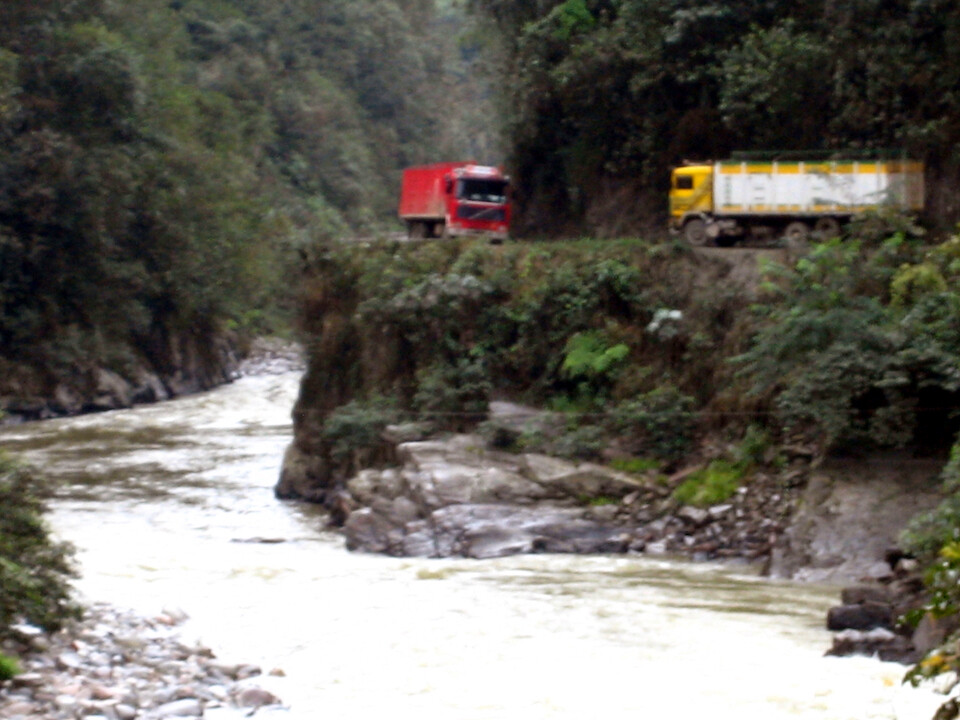
A typical scene of two trucks facing off each other around a bend. It was slow going with lots of stops for traffic encounters but everyone was well-behaved.
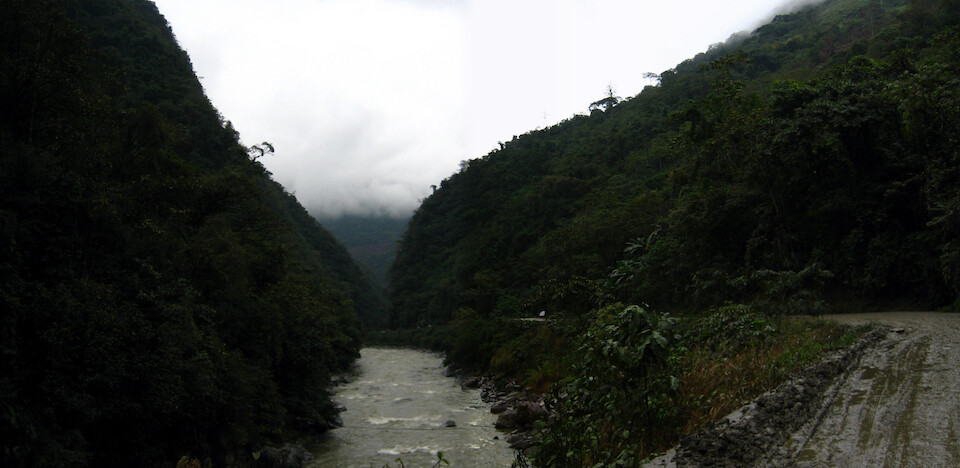
A wide view of the Coroico River as the road winds through the valley.
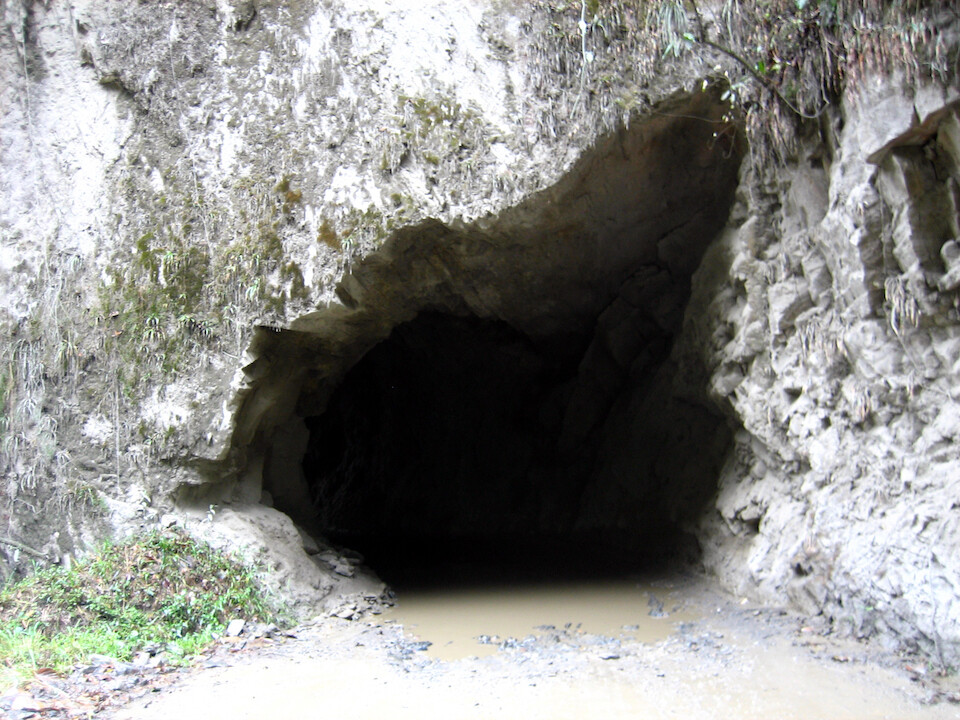
Coming across a natural tunnel, which was underwater.
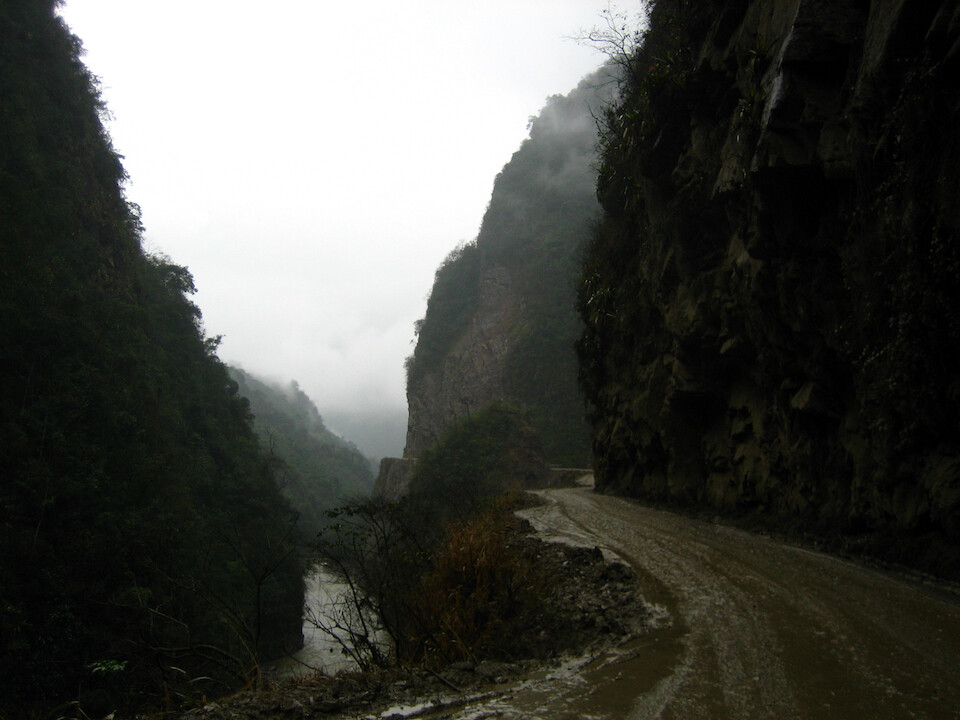
Beautiful ride in this steep valley and besides wetting the road, the misty rain added some epic quality to the terrain.
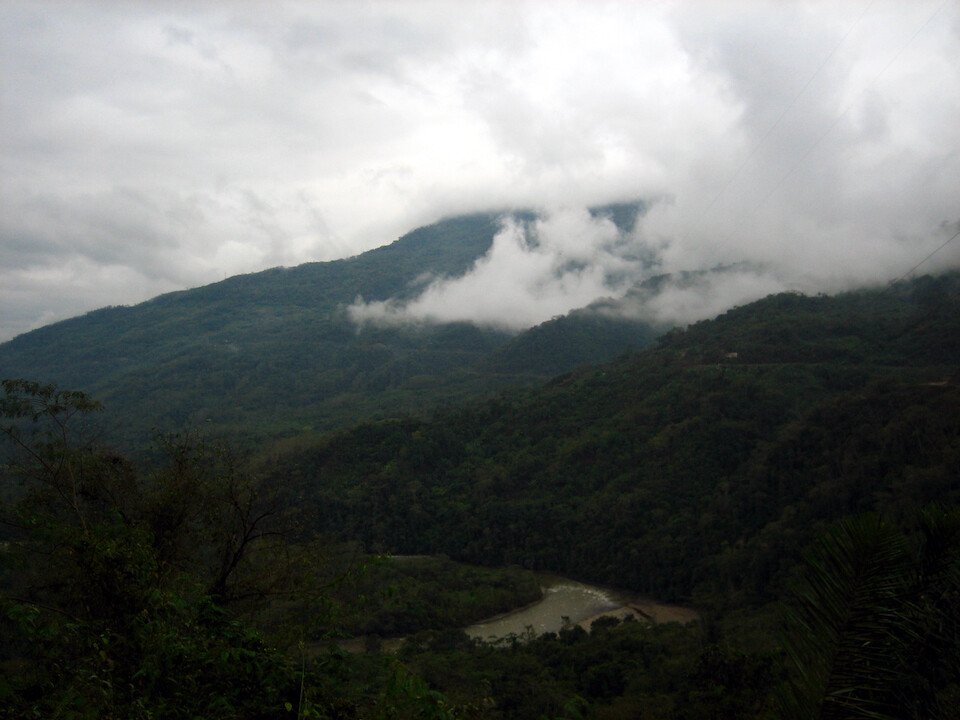
The clouds finally parting as I neared Caranavi, where the first thing I did was wash off the mud again from all the important places. And then soak under a hot shower.

A mural in a restaurant in Caranavi. Say, that looks really familiar...
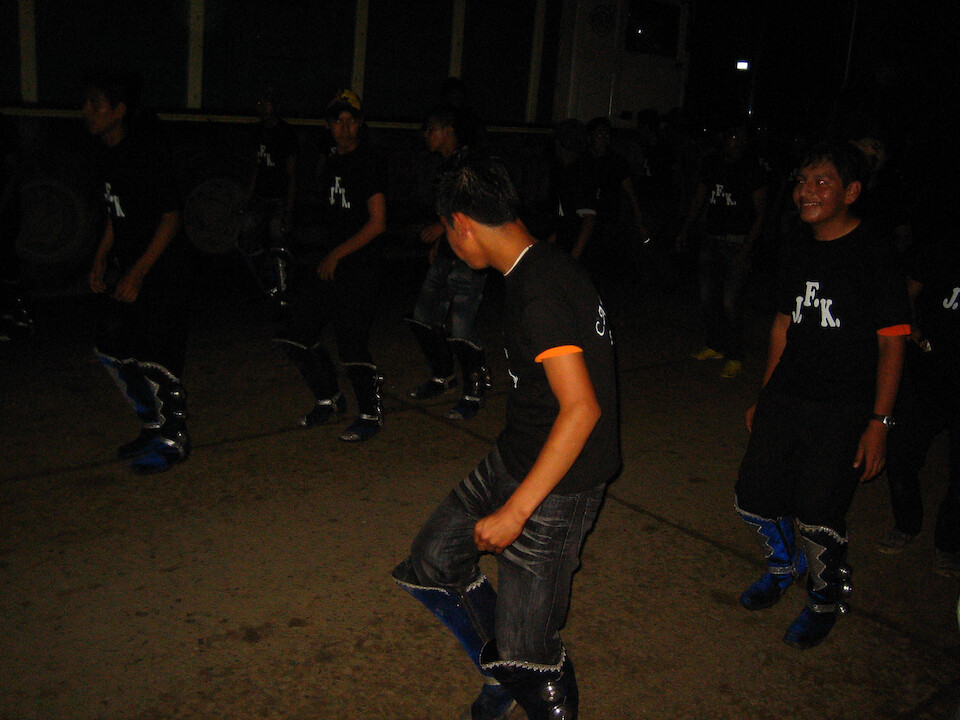
Bolivian independence was coming up in a few days and the parade was having a practice through the streets with kids doing some cool synchronized line dancing with some breakdance maneuvers.
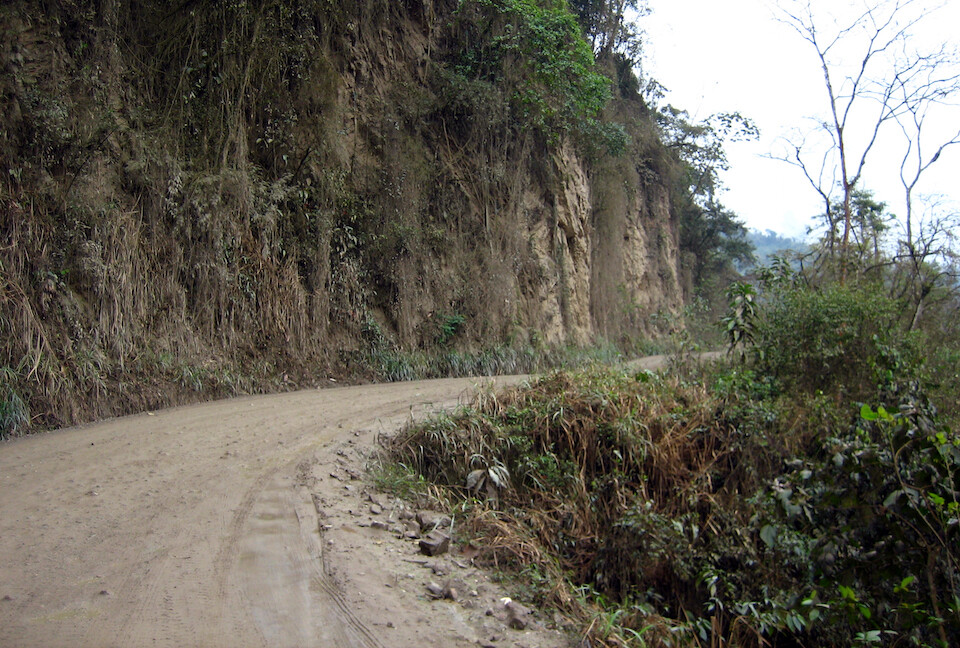
The next day, the rain eased up, but the road was still wet.
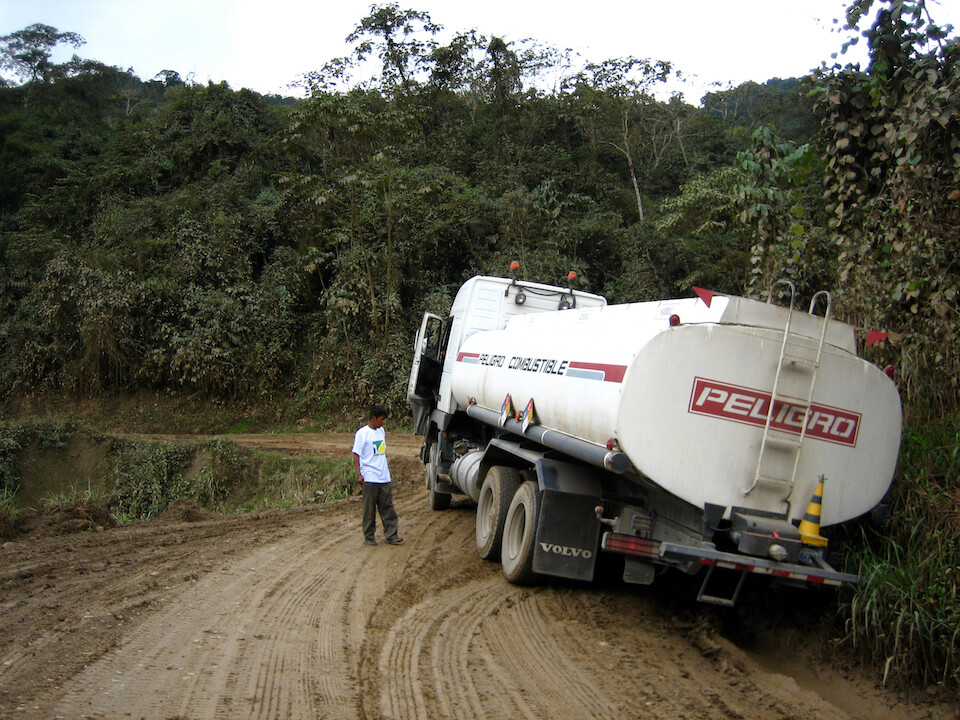
Oops. Sure thing it's peligro (dangerous). This is a fuel truck and imagine how many times they must slip the other way over the cliff.
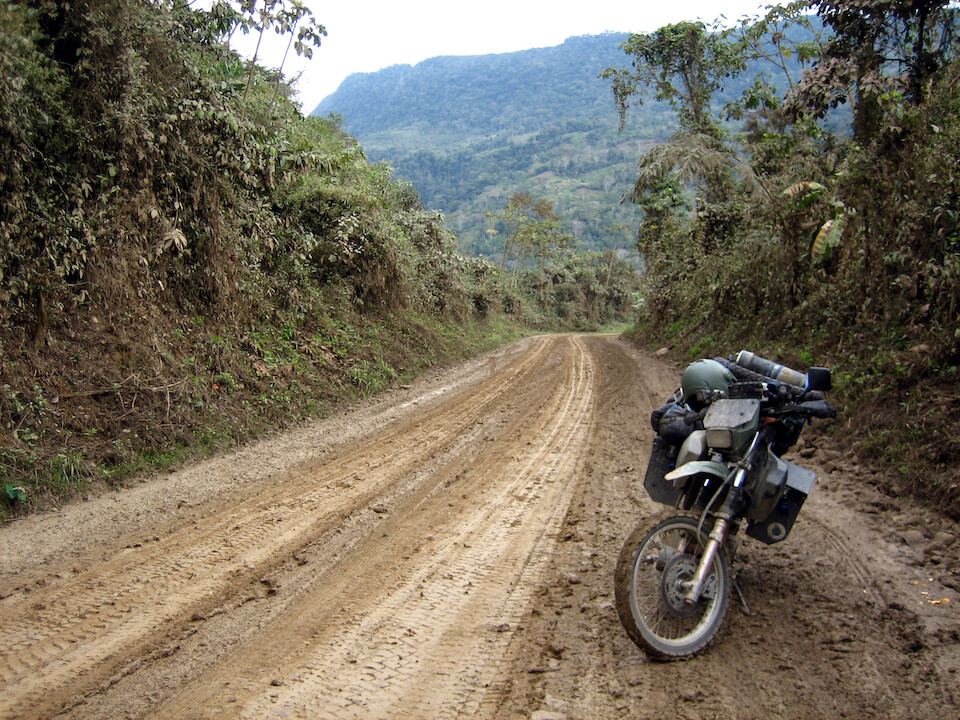
I was chugging along mainly in first or second gear since I'm no expert mud rider, but that got the engine very hot, so I took frequent breaks. The road climbed up and down over numerous hills and I was impressed that I didn't get stuck any where, that too with a worn front tire. This is the only route from La Paz heading to the northern region of Bolivia so buses and trucks were frequent.
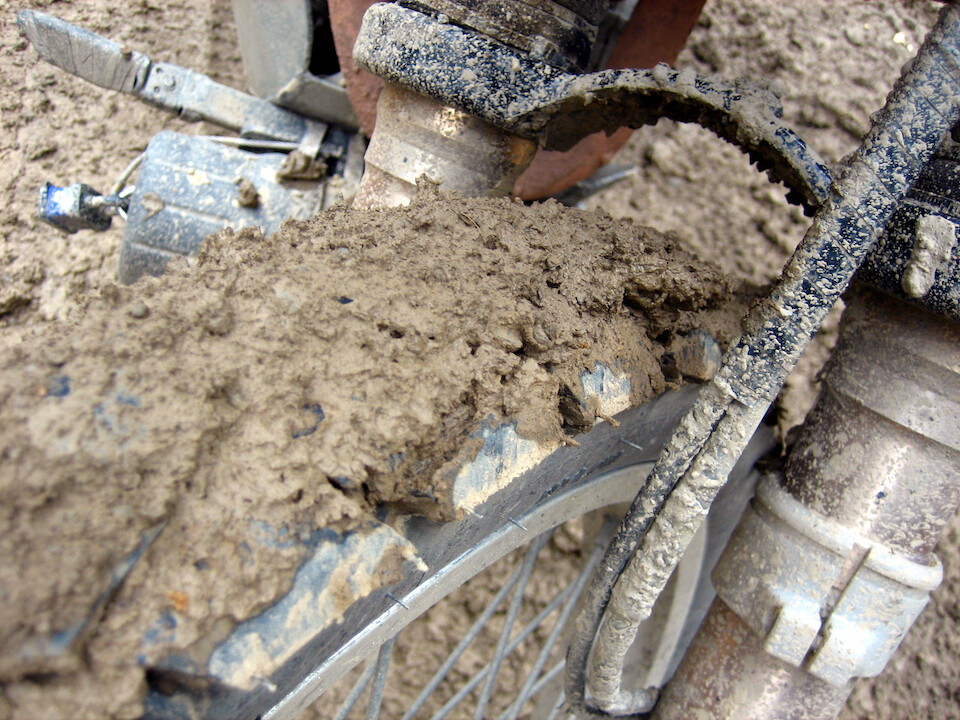
I guess it doesn't matter what kind of tire you have for mud, cause the tread's going to get clogged anyway.
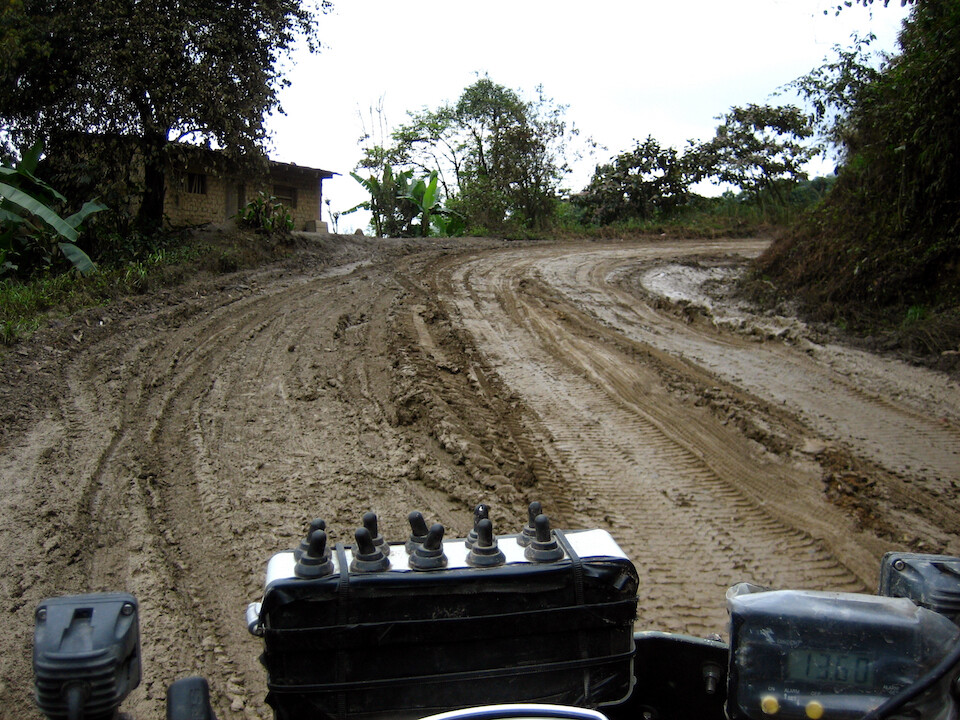
Taking another break as the engine temperature (between spark plug and cylinder head) soared to 176 C (350 F). I was skating with my feet down through the real thick goop away from the tracks.
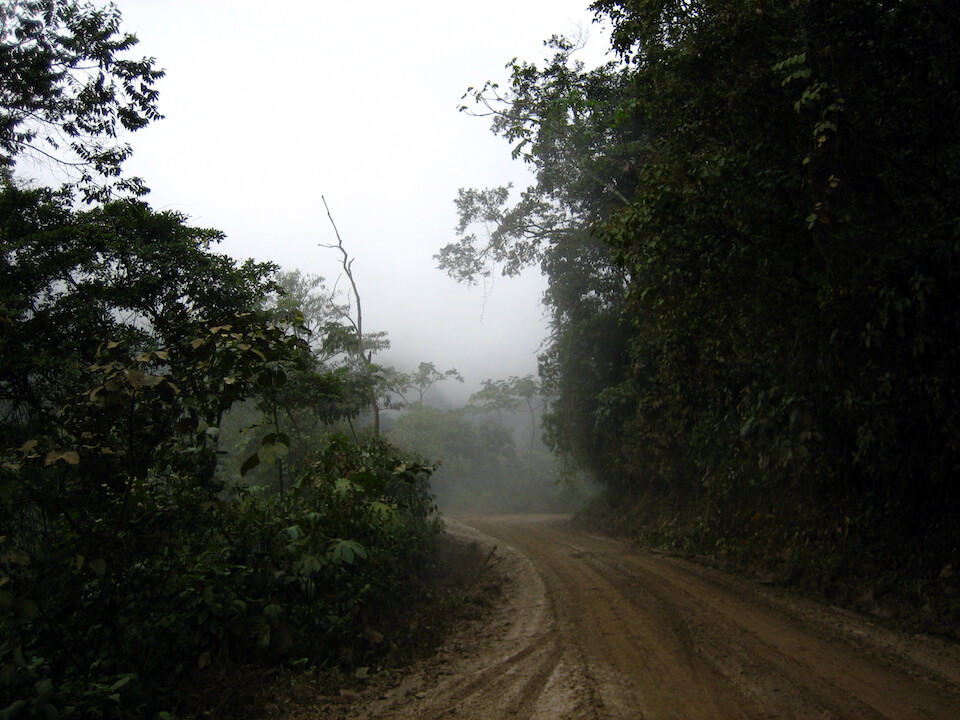
Misty, jungle riding through the Yungas.
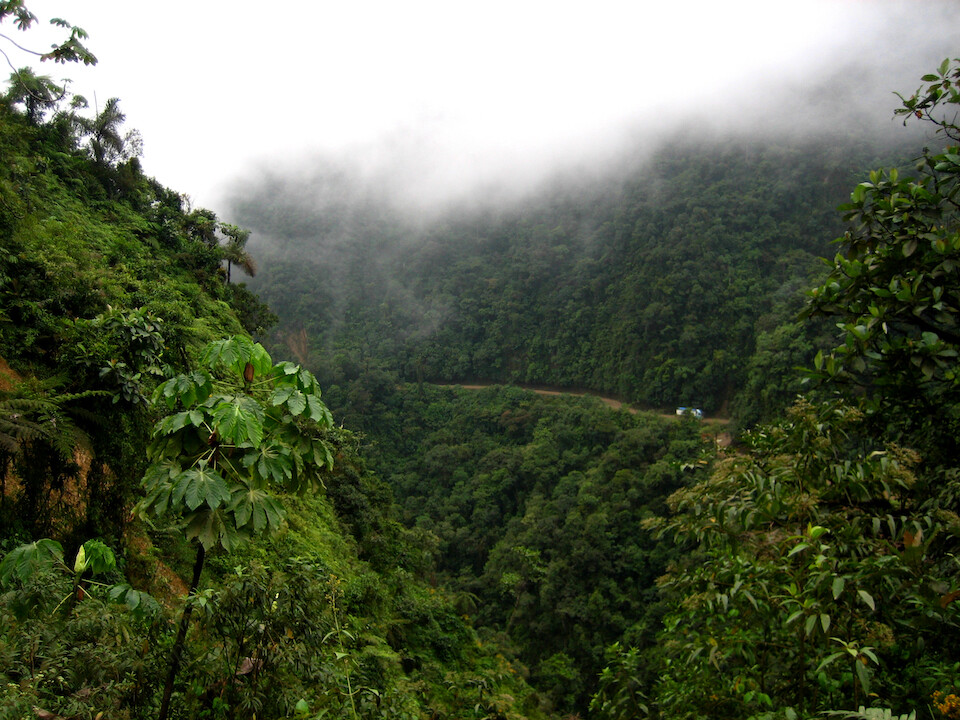
A sense for the terrain that the route passed through. The Yungas are a transitional region of the Andes, a swath of rainy, humid and warm forest along the eastern slopes leading to the savanna below.
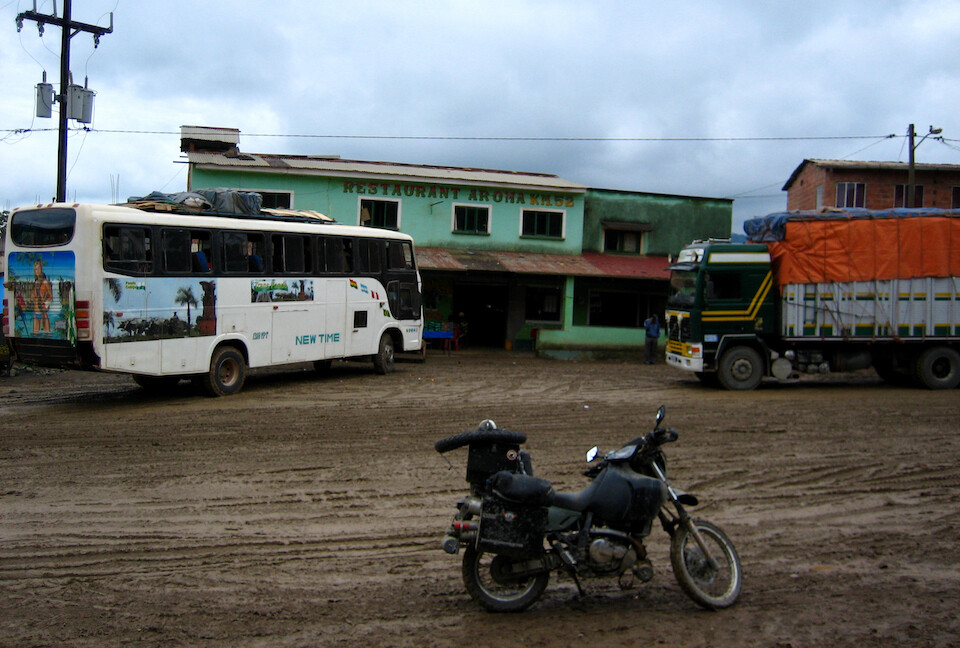
Reaching the small town of Buena Vista where every driver from the route breathed a sigh of relief at coming across an oasis.
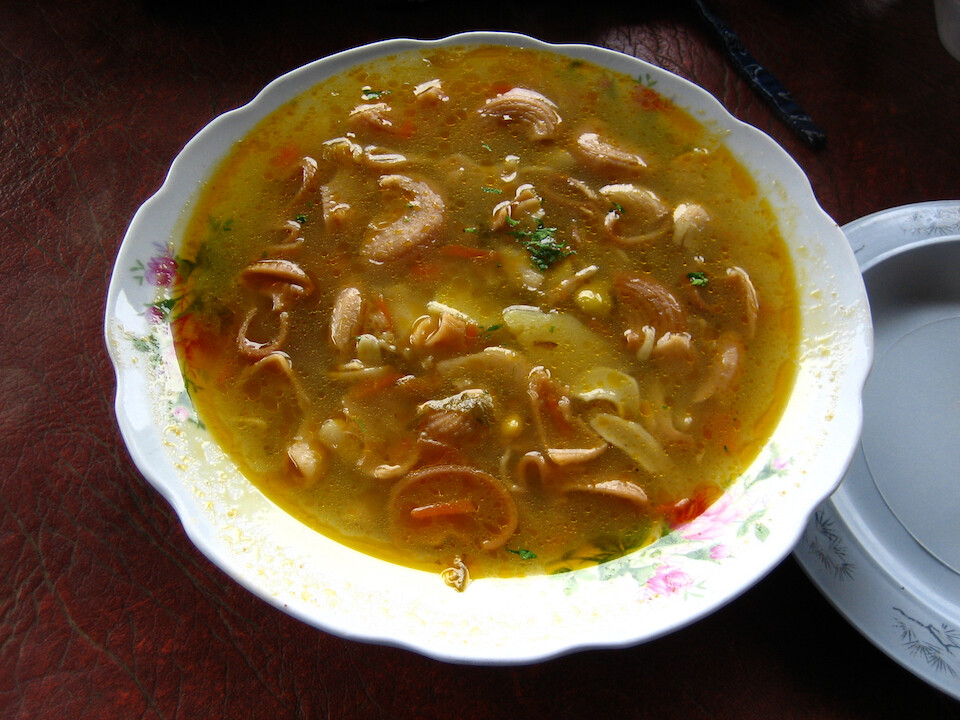
Warming up with some typical pasta soup before the meal.
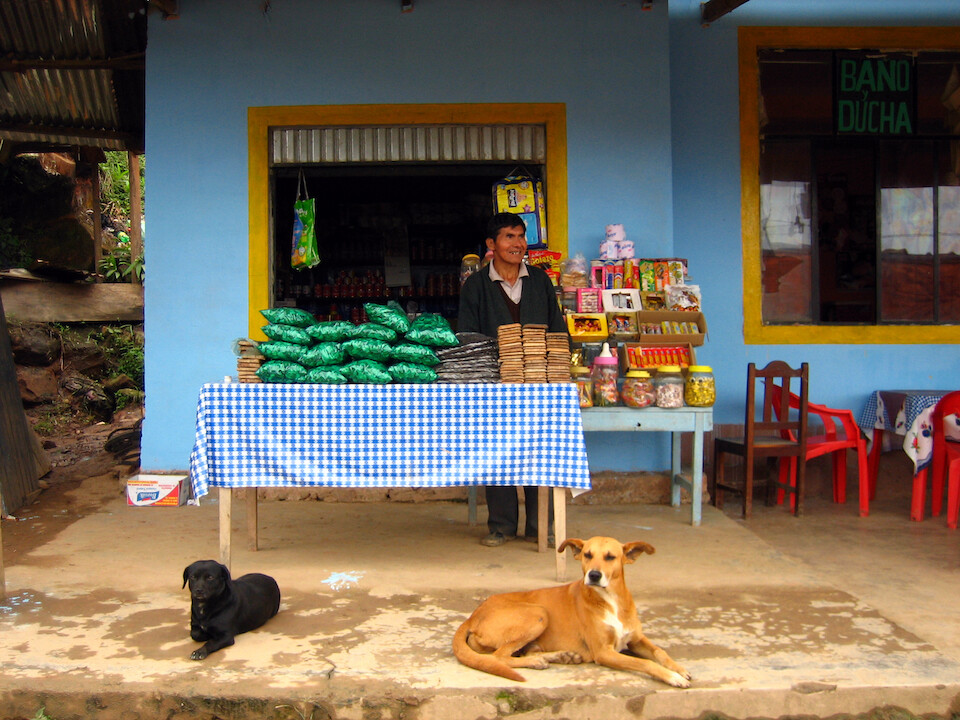
The restaurant owner was also selling coca leaves and home-made chocolate. I loaded up for the dry, dusty straight roads ahead.
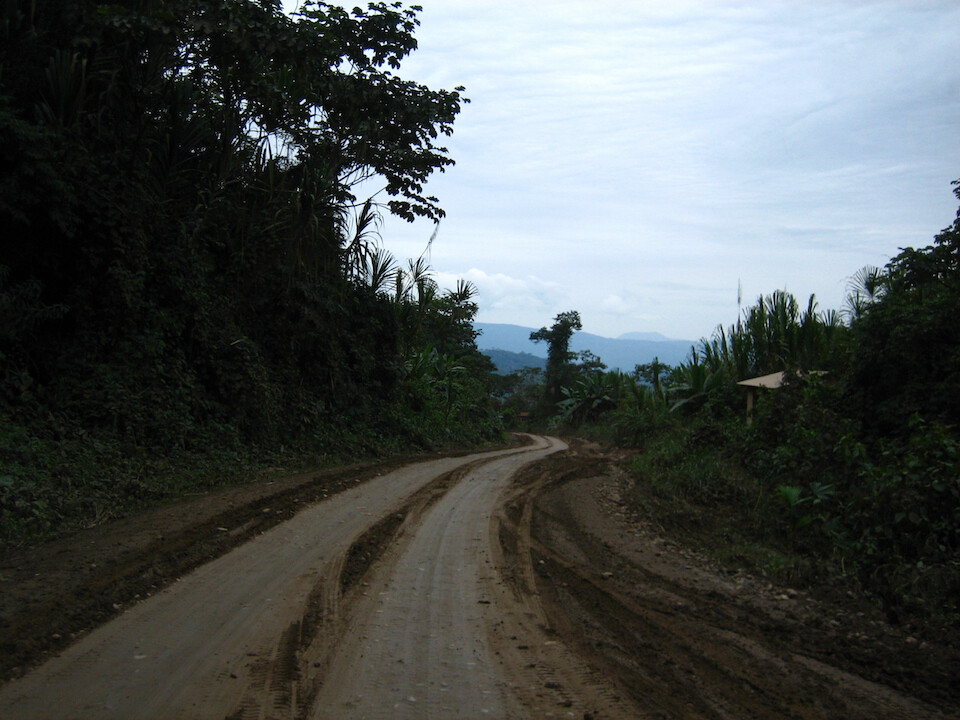
He also said the road gets dry within a few kilometers. Encouraged with the drying track.
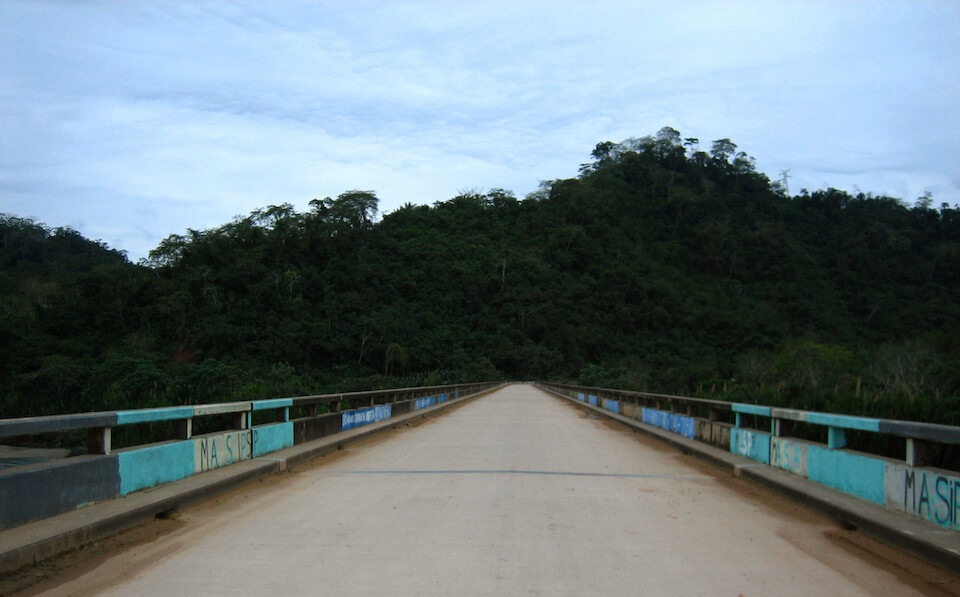
Crossing the Sapecho Bridge and...
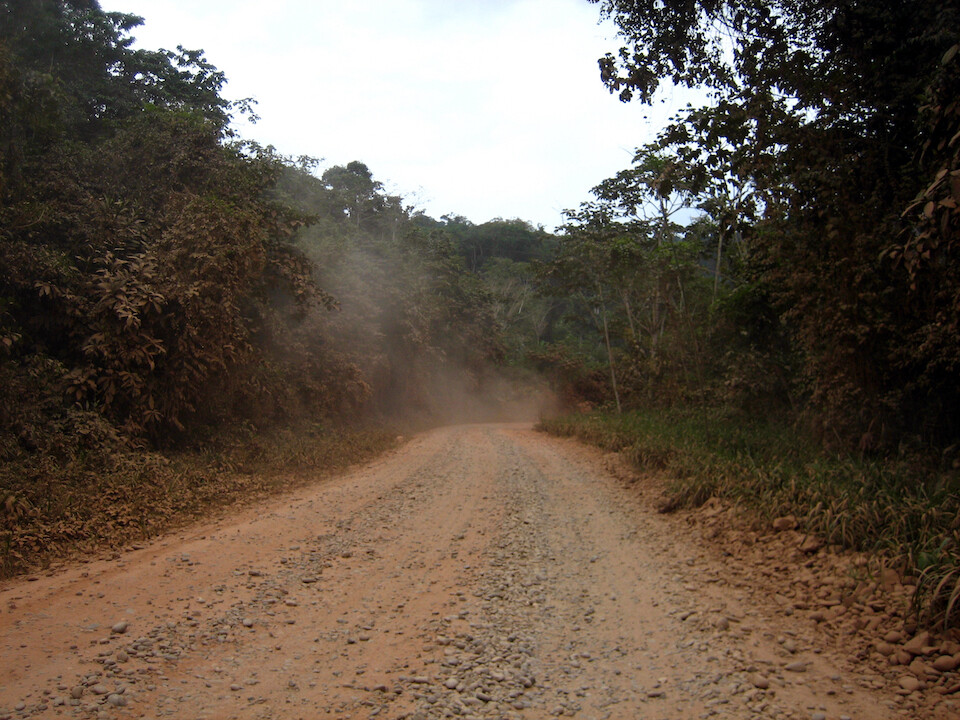
It's dry and dusty! My enthusiasm for the end of the mud roads quickly faded as I realized it would be dry and dusty for the next 4,000 kms (2,500 mi) across the Amazon. Where are those coca leaves?
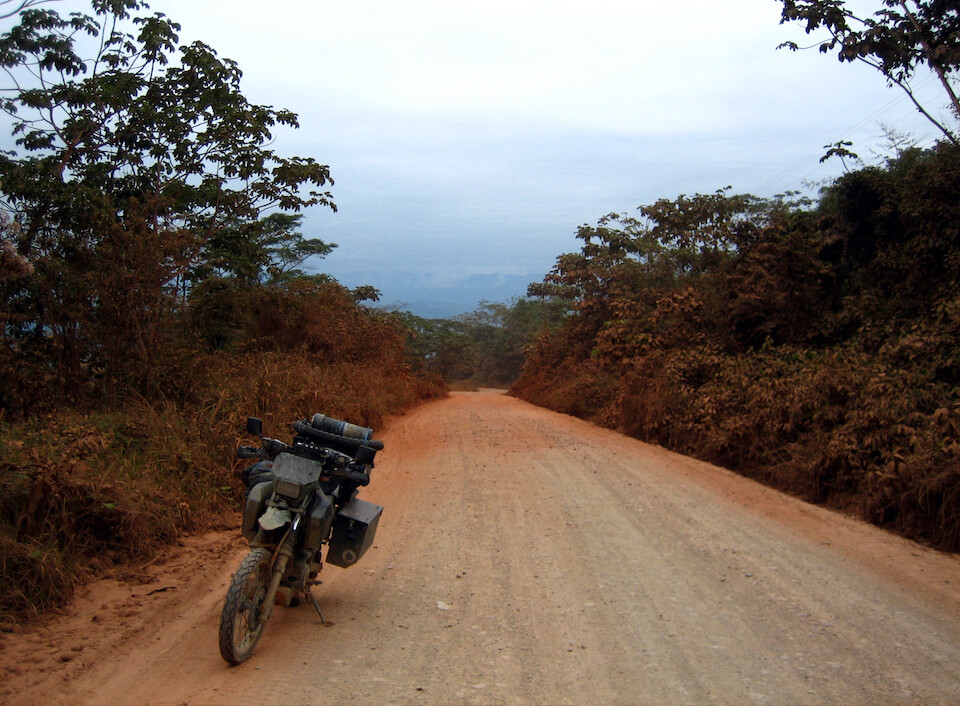
Taking a break for some lunch and looking back at the wet Yungas.
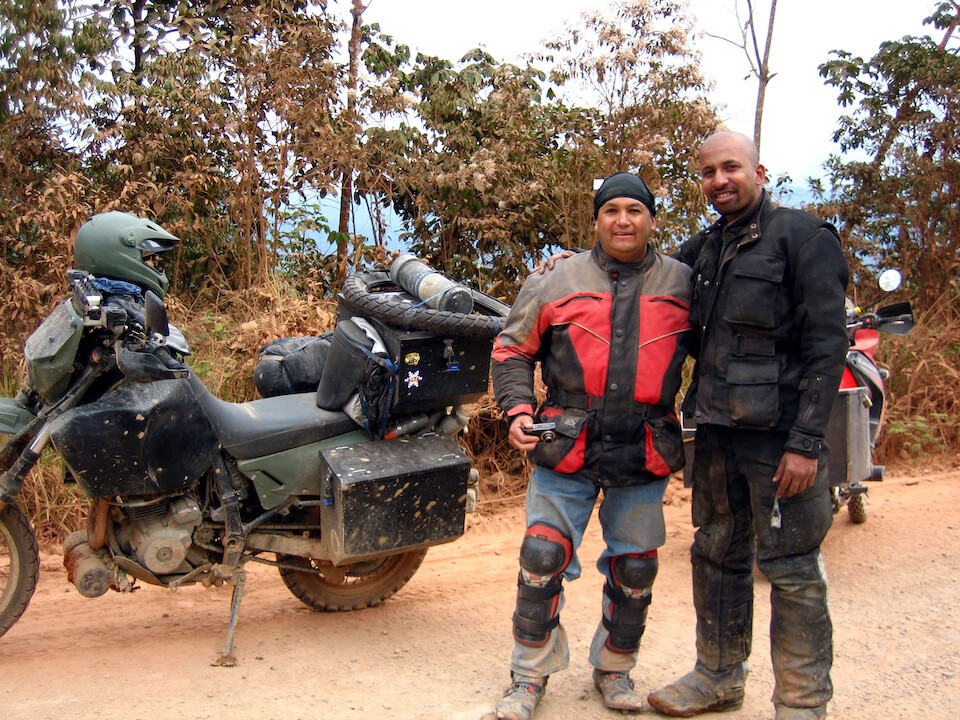
As I was packing up, Oscar here was riding the other way on a KLR. He's from La Paz and a friend of Alfonso's who'd told him about me. "You're the crazy guy with a solar panel, right?"
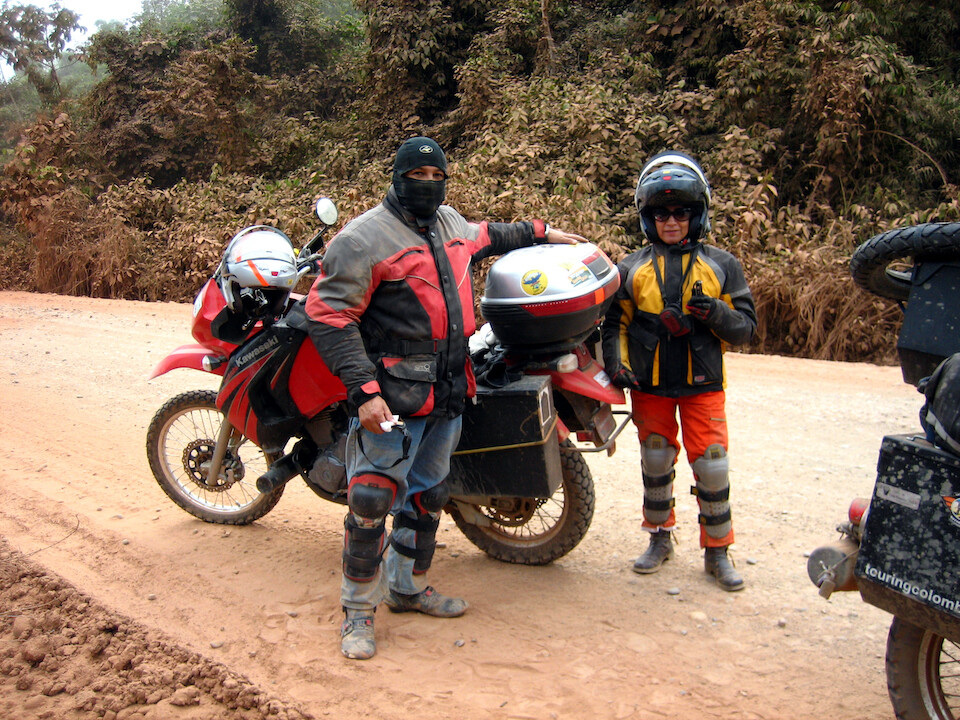
Oscar and his wife coming back from a weekend trip. All suited up for dusty riding conditions and I told them about the mud ahead.
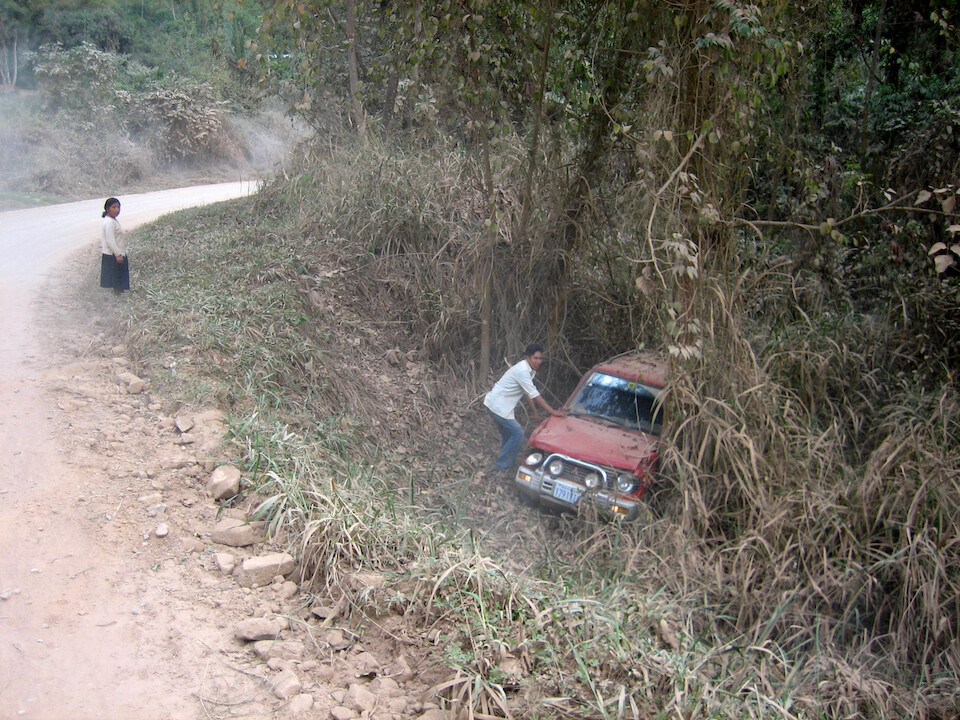
It was easy dirt riding that afternoon and towards the end of the day, I saw this Mitsubishi Pajero come barreling down the road and in front of me, his left wheels got caught in the trough by the edge of the road and it spun him violently across the road into this ditch against some trees. The guy climbed out and said he was fine. The dust hadn't even settled yet when I took this picture. Crazy drivers.
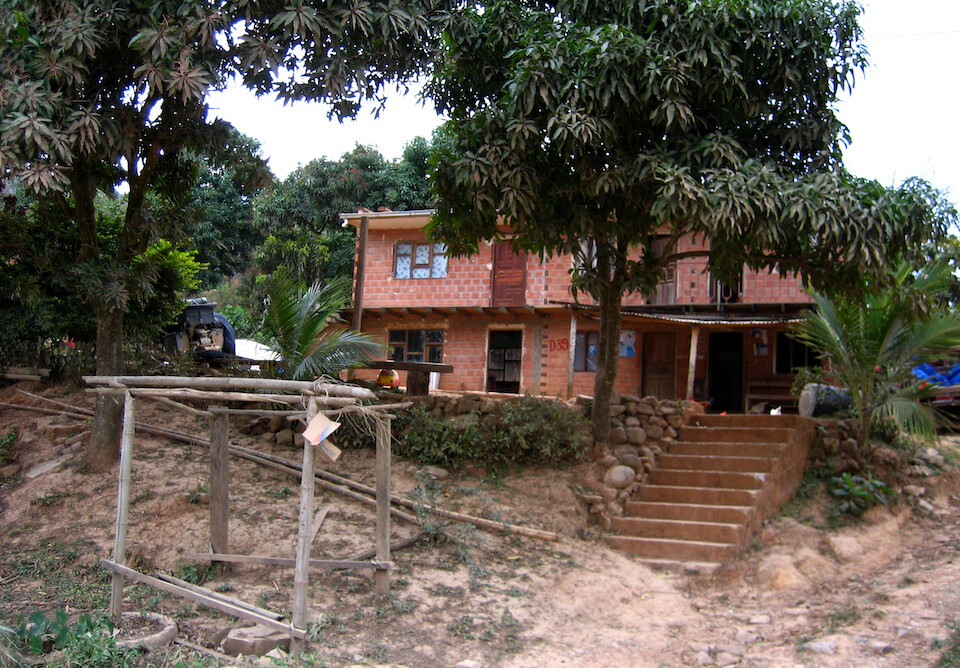
I did about 170 kms (106 mi) today from Caranavi and with the light fading, I asked a lady with a small shop in this building if I could camp here for the night.
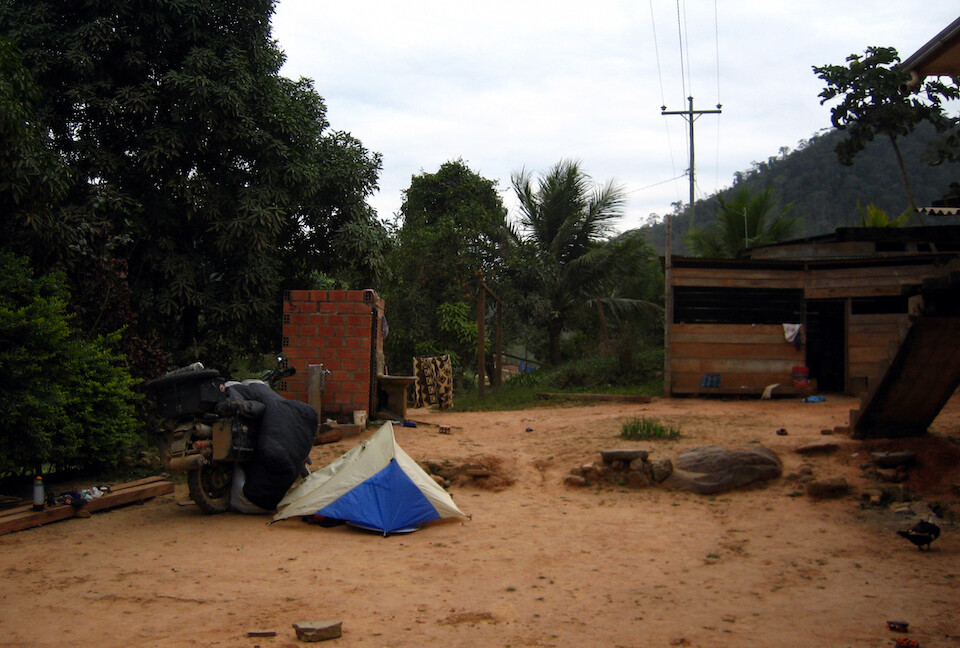
She said no problem and I had some water access. It was breezy and elevation was about 800 m (2,600 ft).
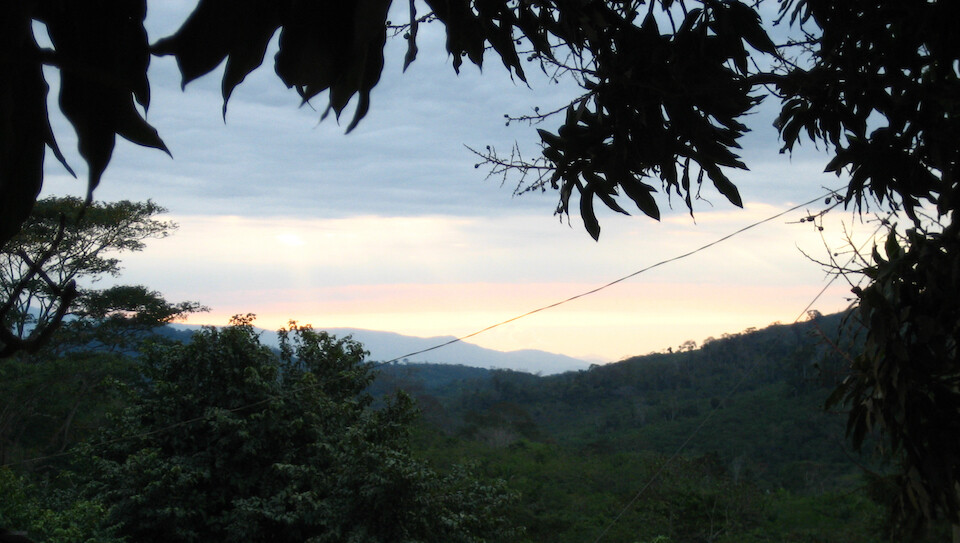
Sunset over the eastern forests of Bolivia.
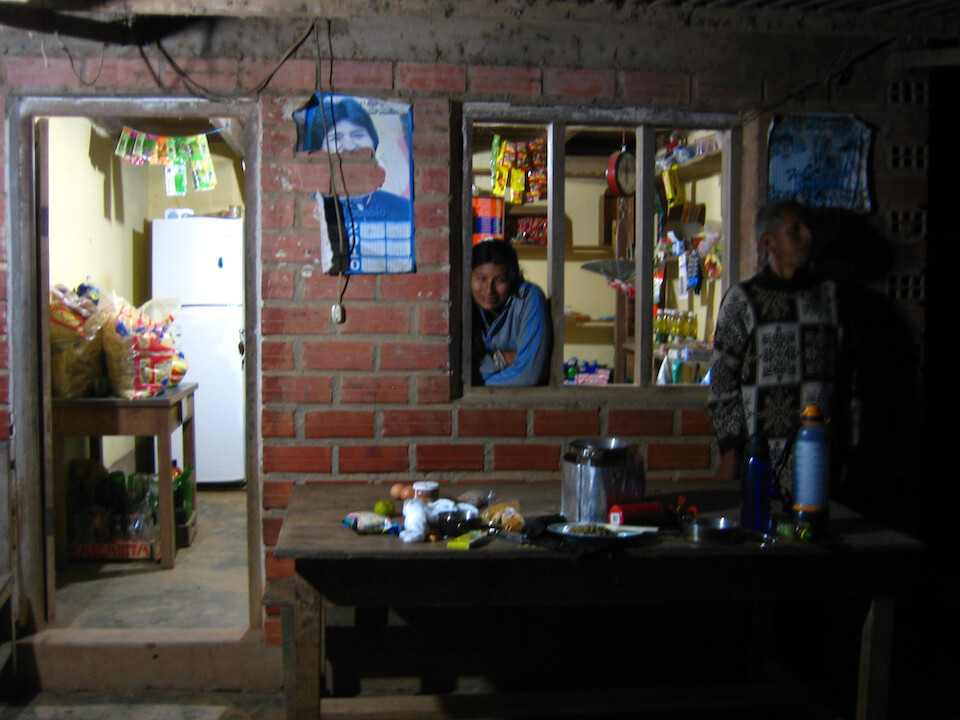
The young lady running the small convenience store and her crazy uncle were intrigued as I setup my kitchen to prepare some dinner.
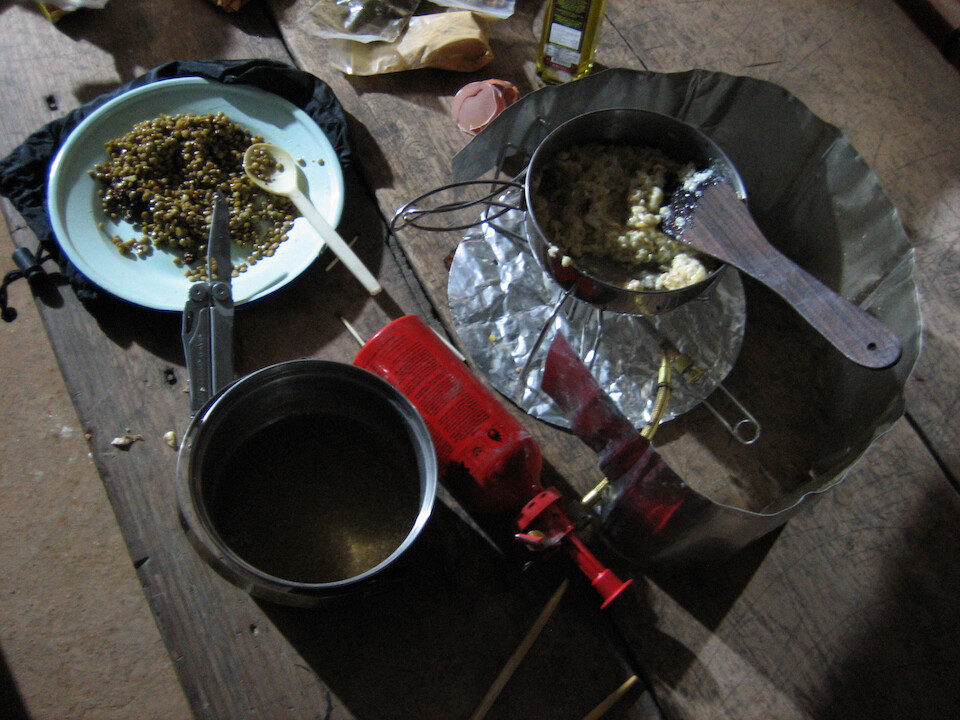
I was carrying lentils and quinoa from Lima and I bought a few eggs from her.
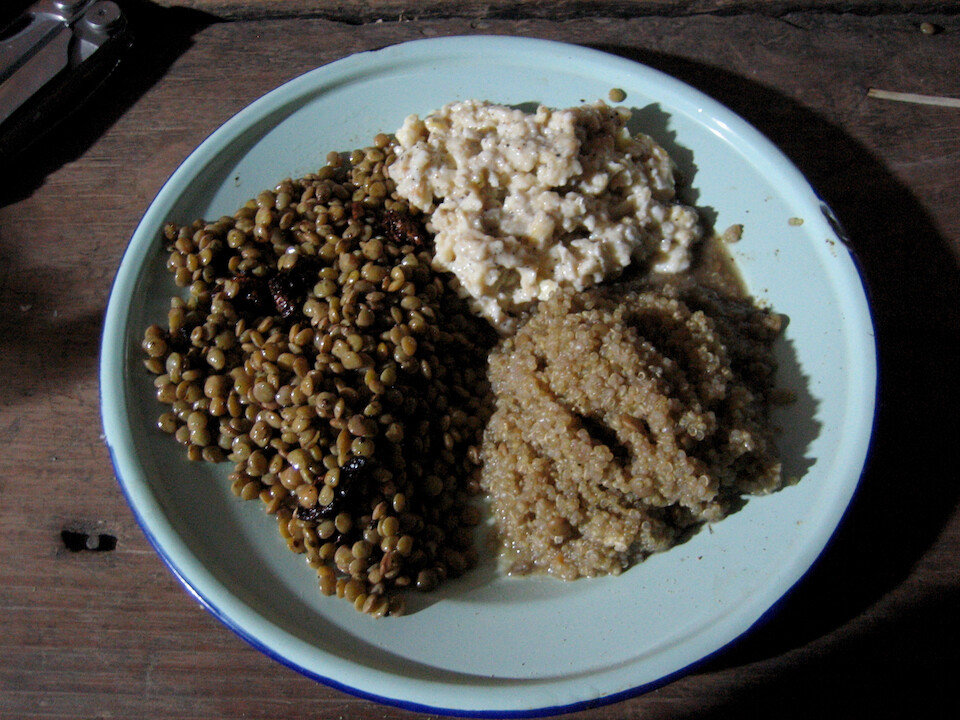
A pretty good high-quality protein meal of lentils with quinoa and scrambled eggs, sprinkled with some Indian spices.
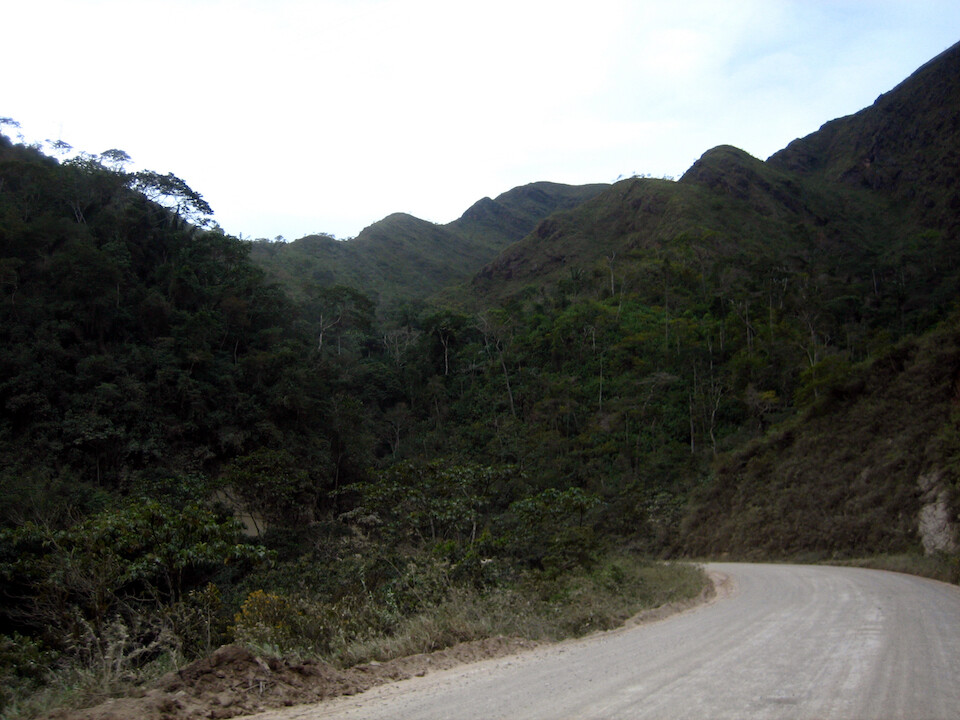
Continuing to drop elevation the next day as I pushed towards Rurrenabaque.
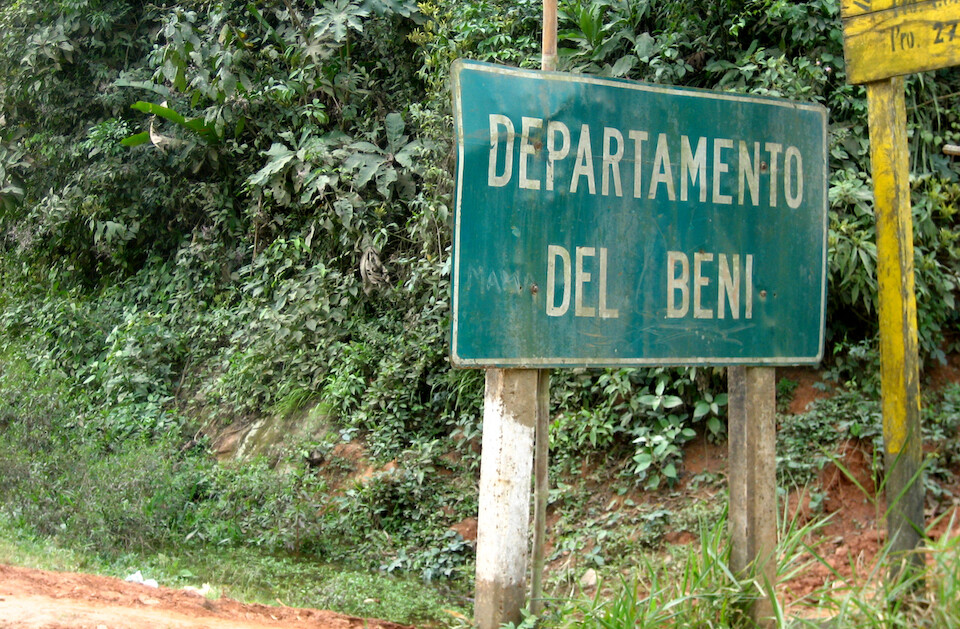
Entering the remote northern state of Beni.
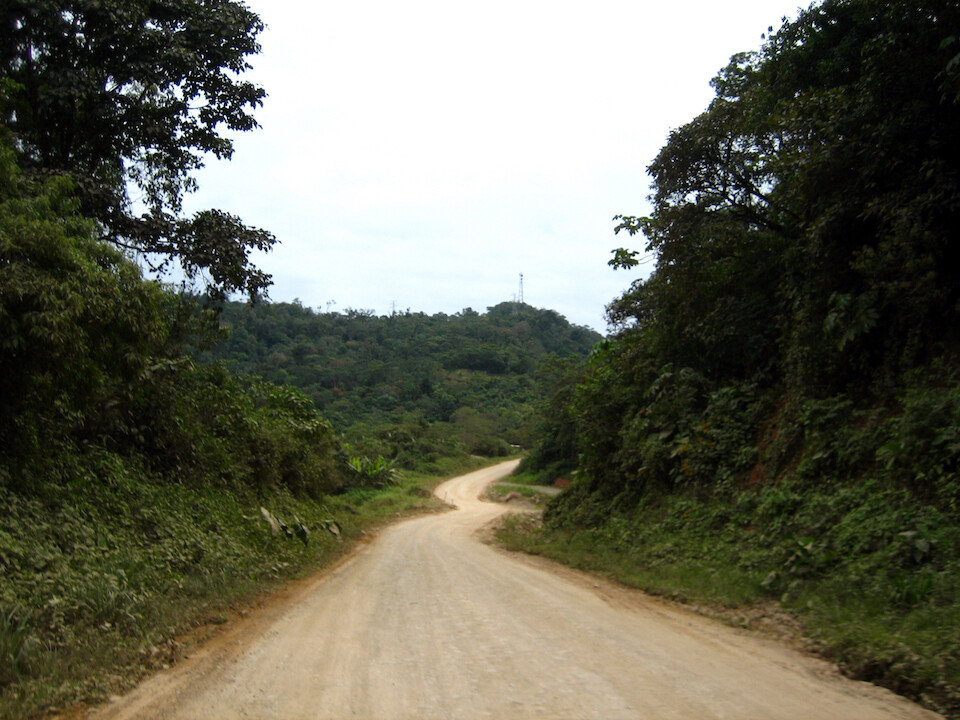
The road was in better condition with some stretches of asphalt even.
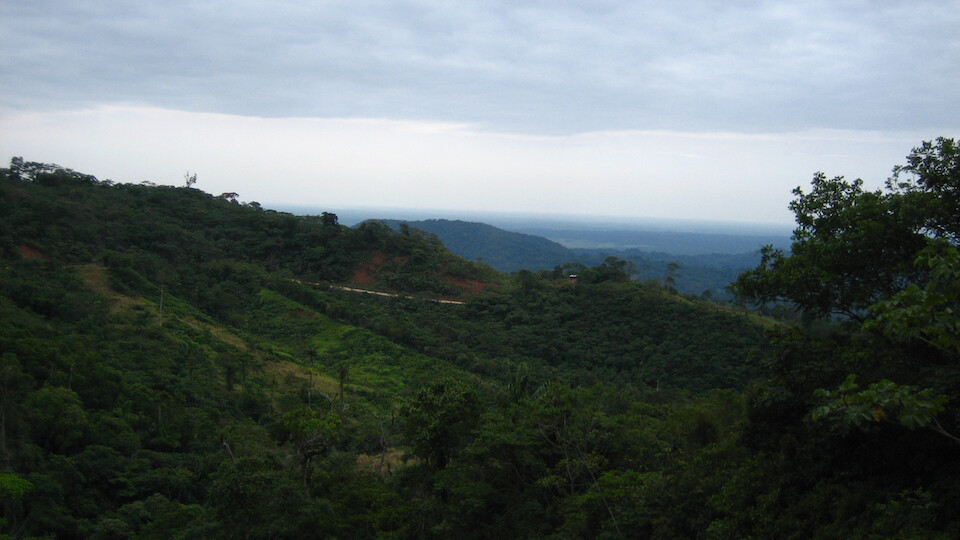
The end of the Andes. The foothills end and the flat terrain starts. I've enjoyed these past months roaming around the majestic Andes and look forward to coming back soon. The Amazon lies ahead.
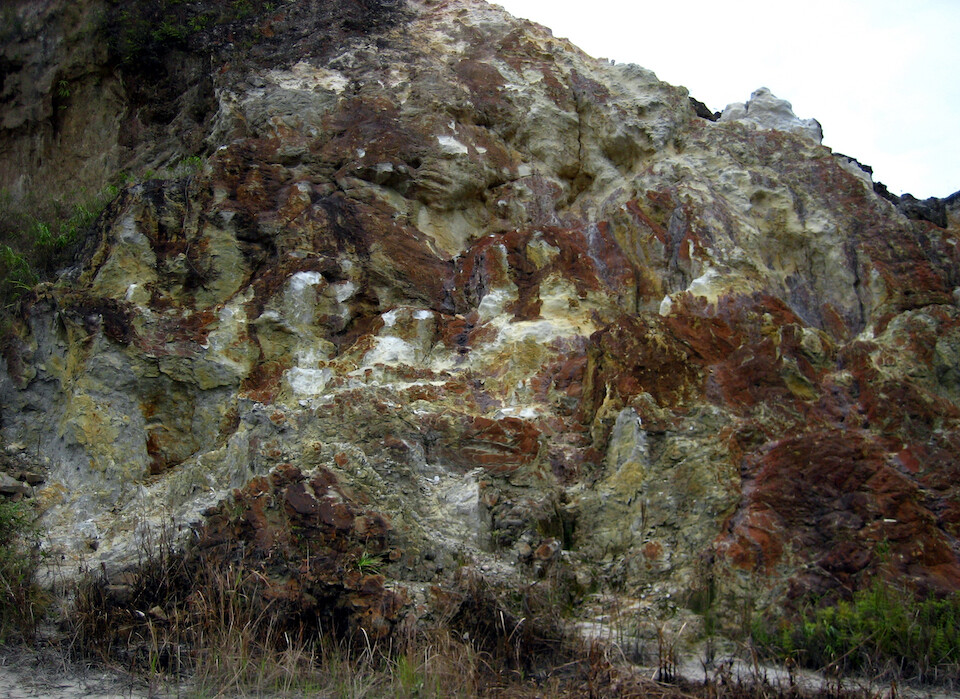
Colorful rock formation as the road touched down onto the flats.
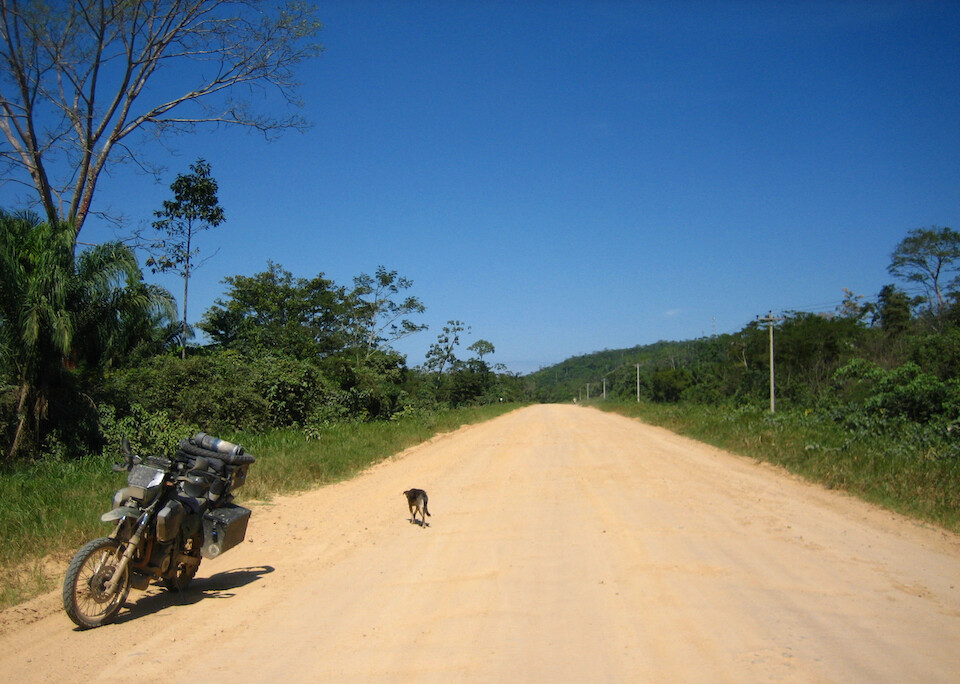
Remove the hills and you get a wide, straight road. It was now getting hot for the first time in three months and time to remove my liners that I put in around southern Colombia.
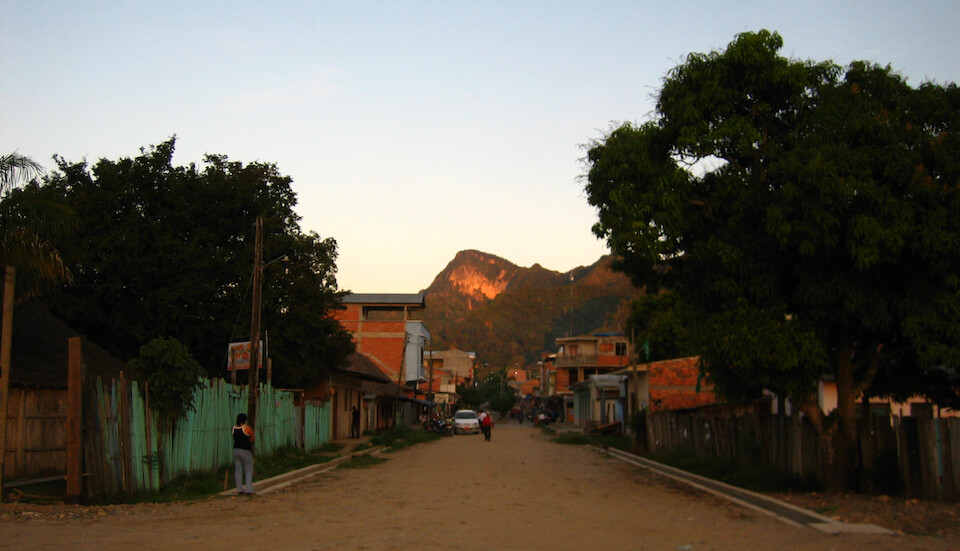
Arriving at the halfway point between La Paz and the Brazilian border at Rurrenabaque, a tourist town geared towards jungle and river boat trips. I didn't intend to stay in town but as I rolled into the gas station on reserve, the attendant told me they had no petrol and he was the only gas station for around 50-100 kms (31-62 mi). I rode around town trying to find gas but no one was selling. He said the fuel convoy broke down in Caranavi and then later said they were being held up by road blocks. I figured I was going to be here for a while, waiting on petrol to arrive.
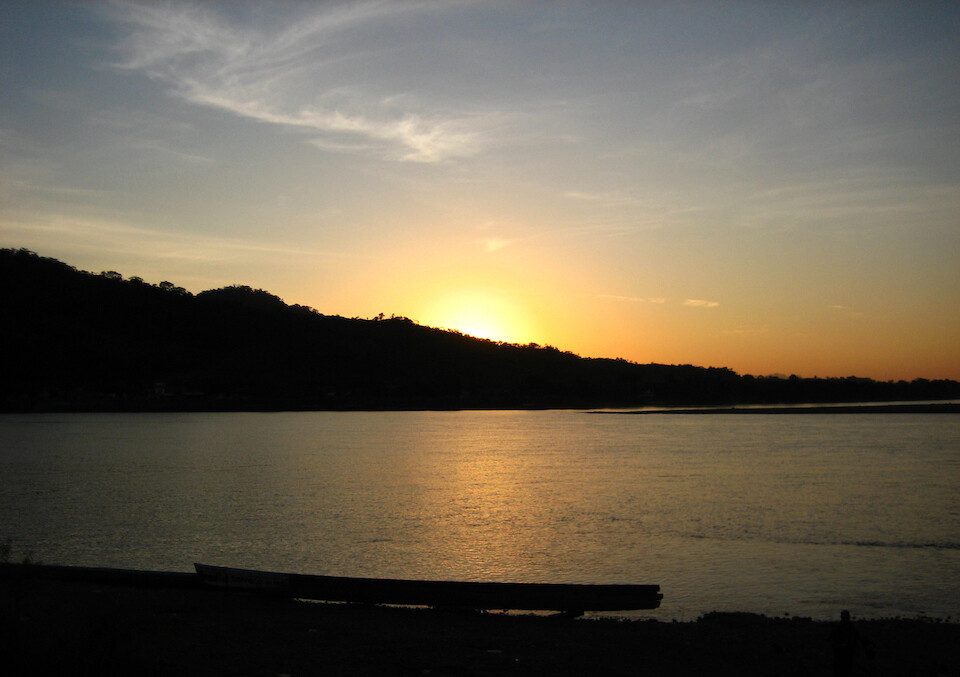
At least the setting was quite nice. Watching a sunset over the Rio Beni.
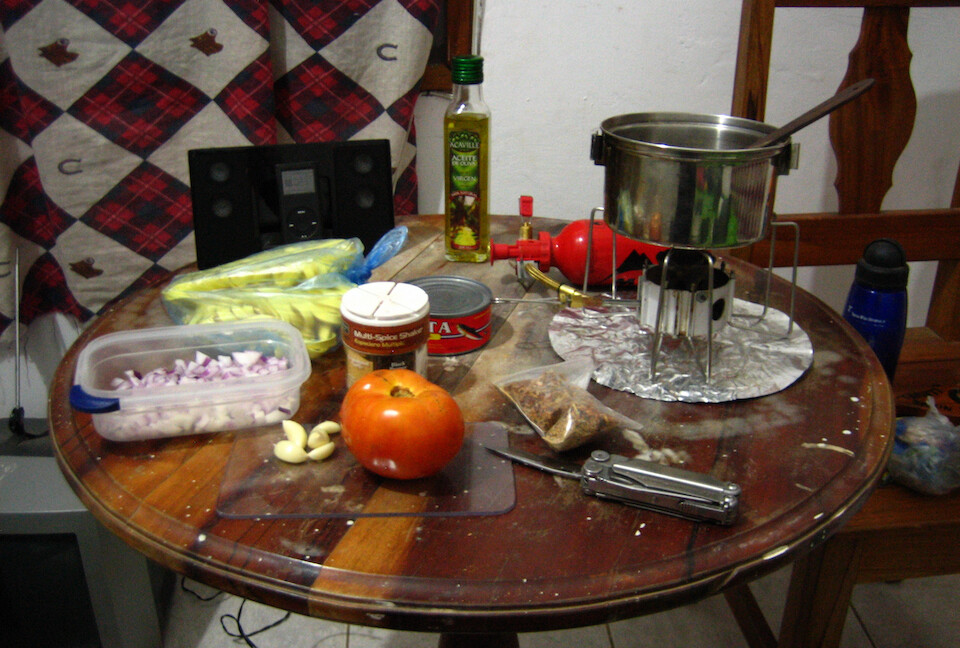
Still in 'expedition mode,' I cooked in my hotel room.
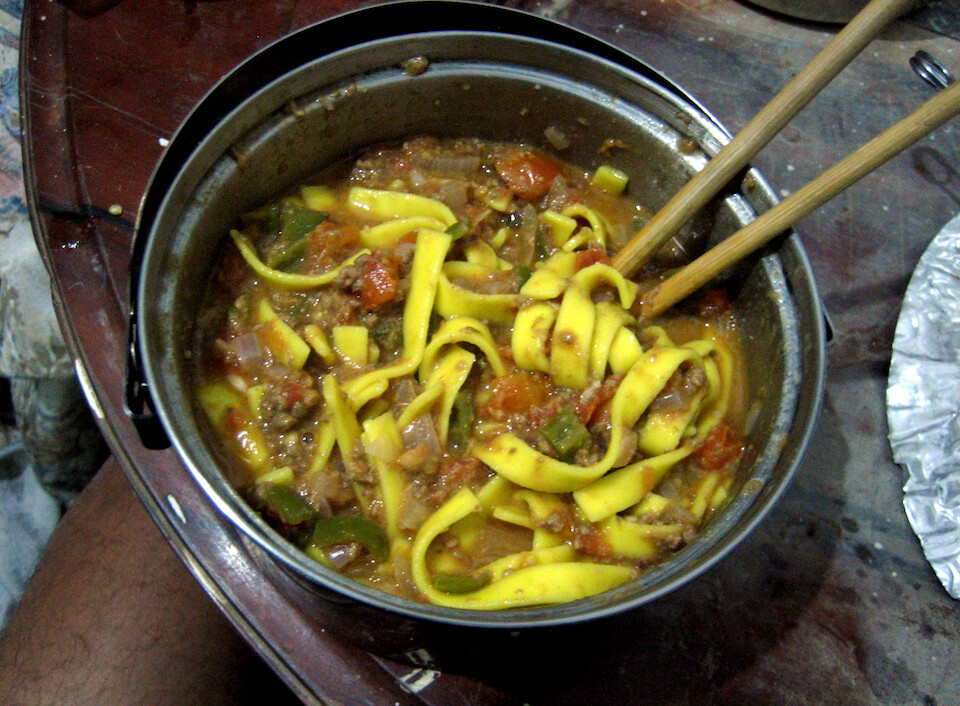
Preparing some pasta with tomato and tuna sauce.
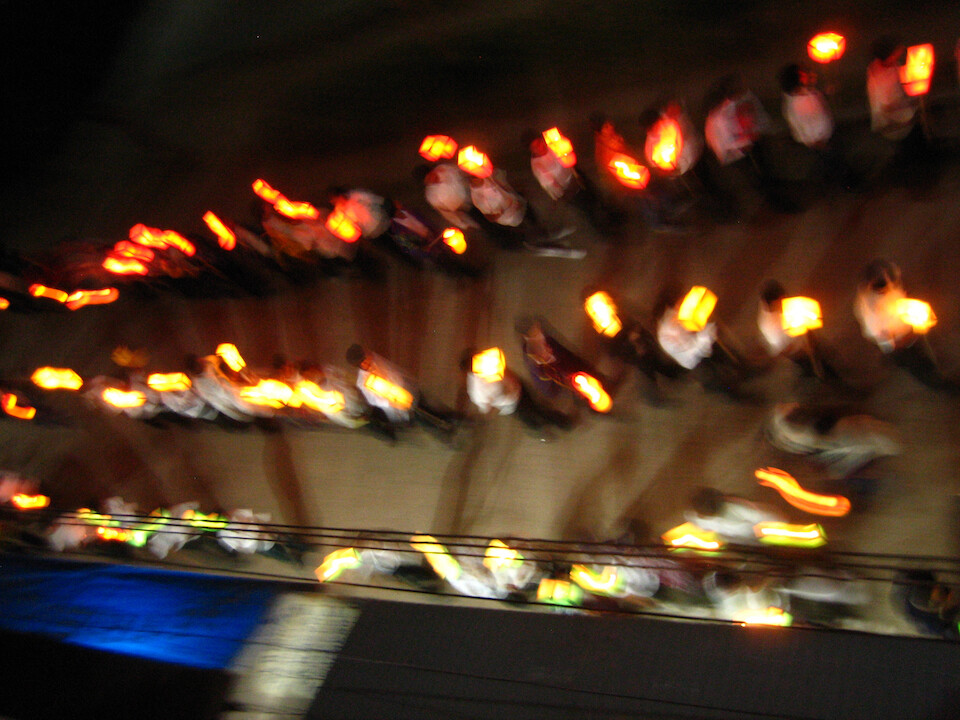
Bolivian independence day celebrations in the streets of Rurrenabaque. The different colors represent the colors of the Bolivian flag.
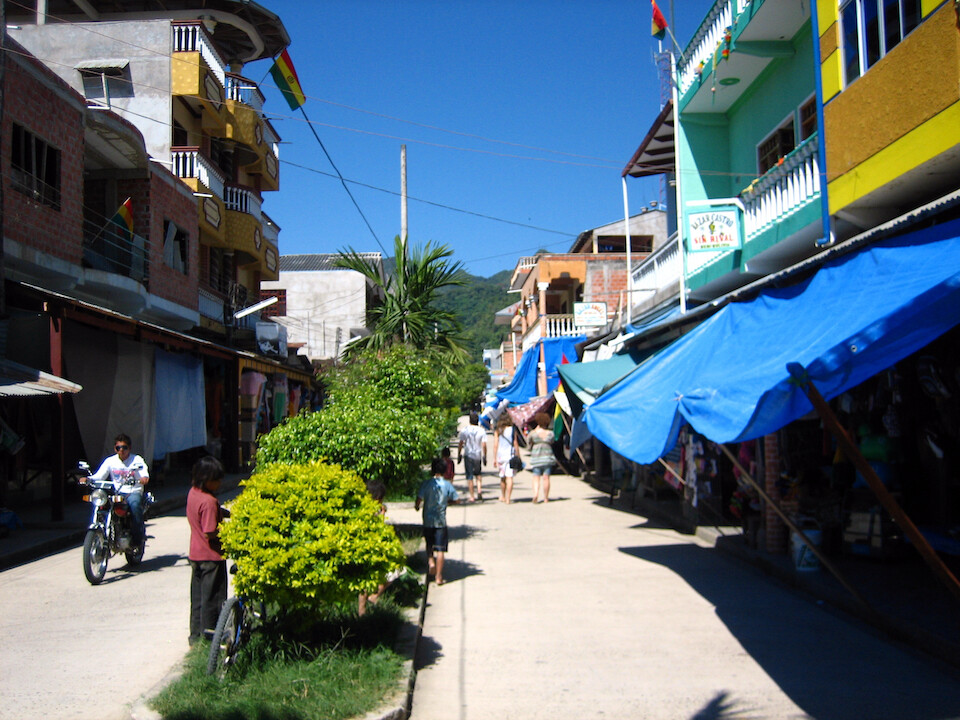
I walked around town, mainly to the food market and spent the downtime learning Portuguese for the upcoming crossing into Brazil.
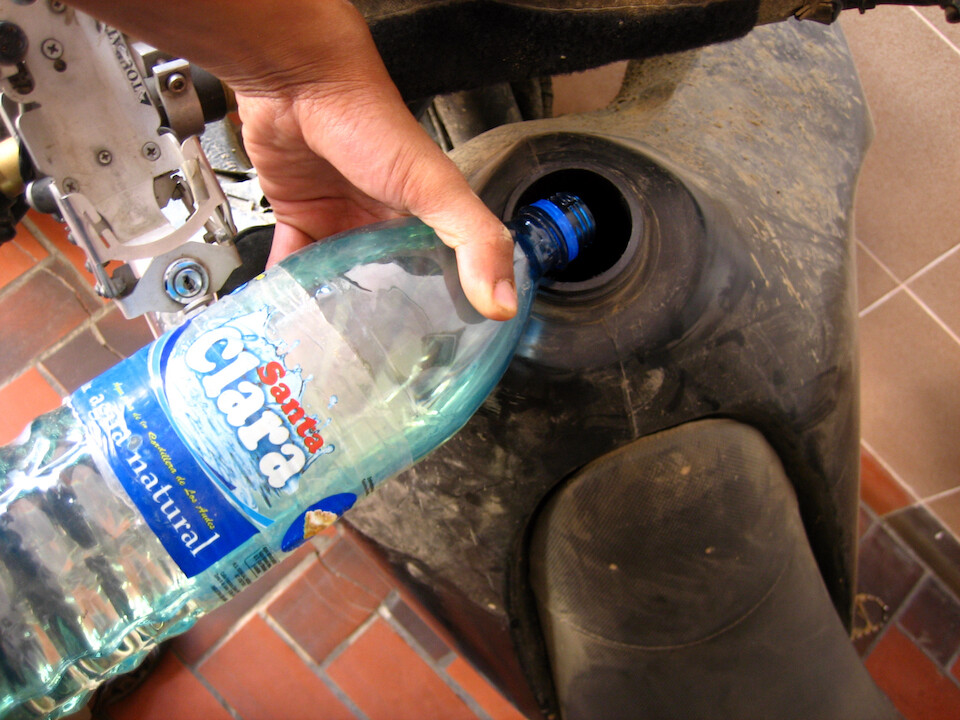
I managed to get a hold of 2 liters of petrol (0.53 gal) for 10 Bolivianos, about 1.25 times the regular price. As the days passed, the price for bootleg gasoline kept rising and I was debating whether to bite the bullet and buy 40 liters at now 4 times the regular price at 15 Bol/liter (USD 8/gal) or keep waiting for the fuel trucks to arrive. As I decided to buy the petrol at whatever price it was, my contact I developed at a local tour agency (where they horde thousands of liters of gasoline to ensure business stability), didn't follow through.
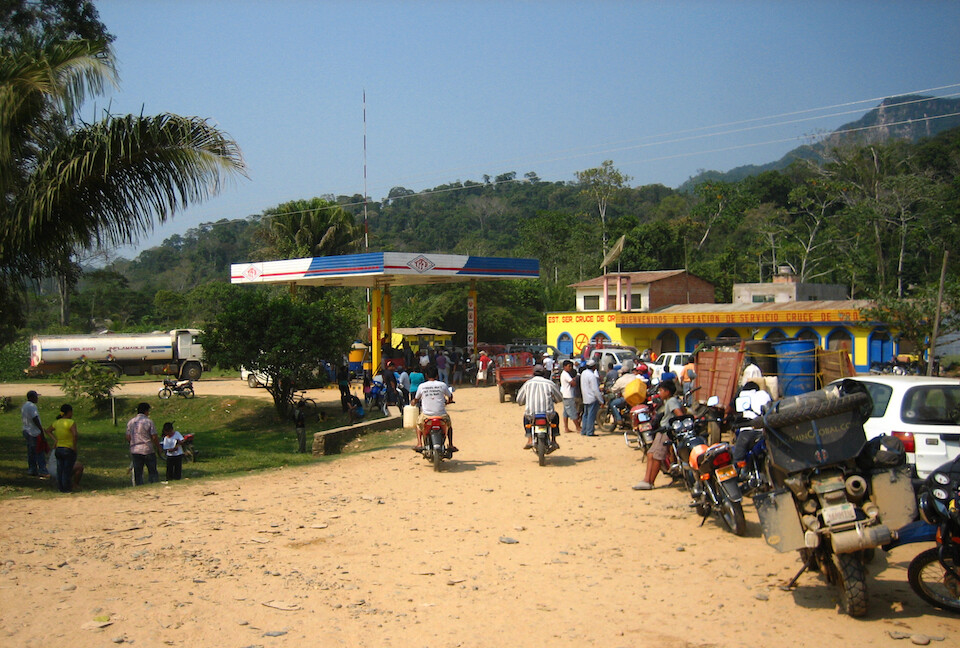
But luckily, on the fourth day, the fuel convoy arrived and everyone in town rushed out to the gas station to queue in lines to fill up their 2-wheelers, cars and spare barrels. It was slow moving and I was in line for about four hours. There was only one pump and the attendant alternated between filling up cars, barrels and the bikes. The moto taxi riders were the most vocal and demanding, but it was generally a jovial atmosphere. The attendant said there was no rush since three fuel trucks had arrived and there would be plenty of petrol for everyone. He encouraged people to come back in the afternoon to disperse the crowd, but no one was going anywhere until they got a fill up. Those three trucks probably didn't last till the afternoon.
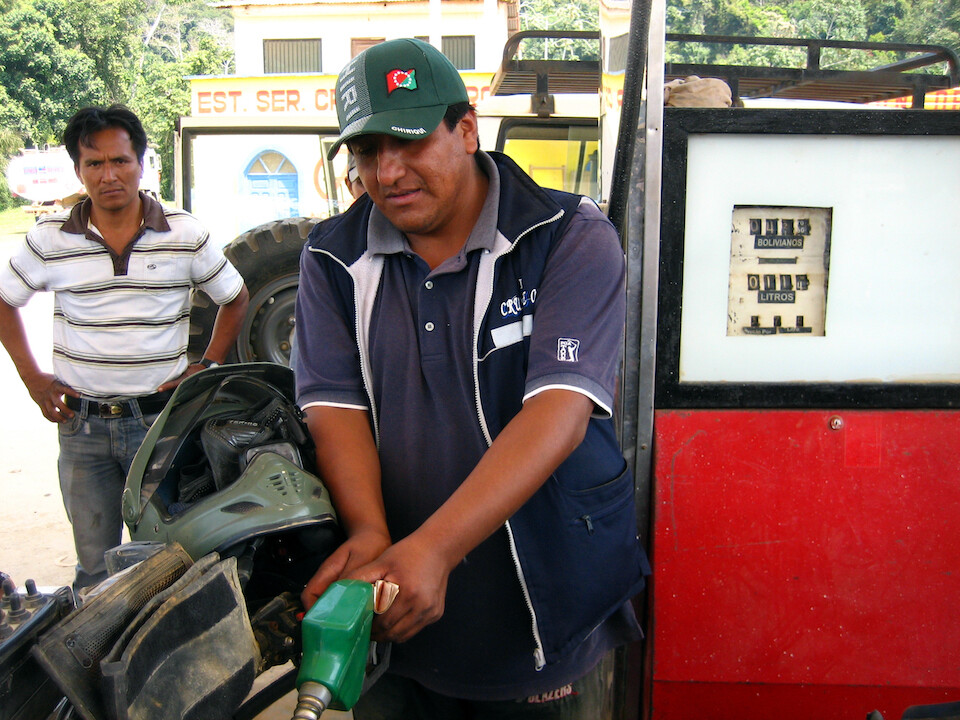
Everyone gathered around to see how many liters my giant tank would hold and with those 2 liters that I dumped in earlier, it swallowed another 39 liters (10.3 gal). And luckily at the regular price of USD 2/gal. Only when it's scarce, do you really get a feel of how much our lives depend on this black gold from prehistoric plants that runs our current world. Hopefully it won't take more severe scarcity for us to realize the finite amount of natural resources on this planet.
Next: Bolivia, Part 4: Hot and dusty across the Pampas
Previous: Bolivia, Part 2: Salar attempt and return to La Paz